

INDIA TECHNOLOGY SHOWCASE SPECIAL- l
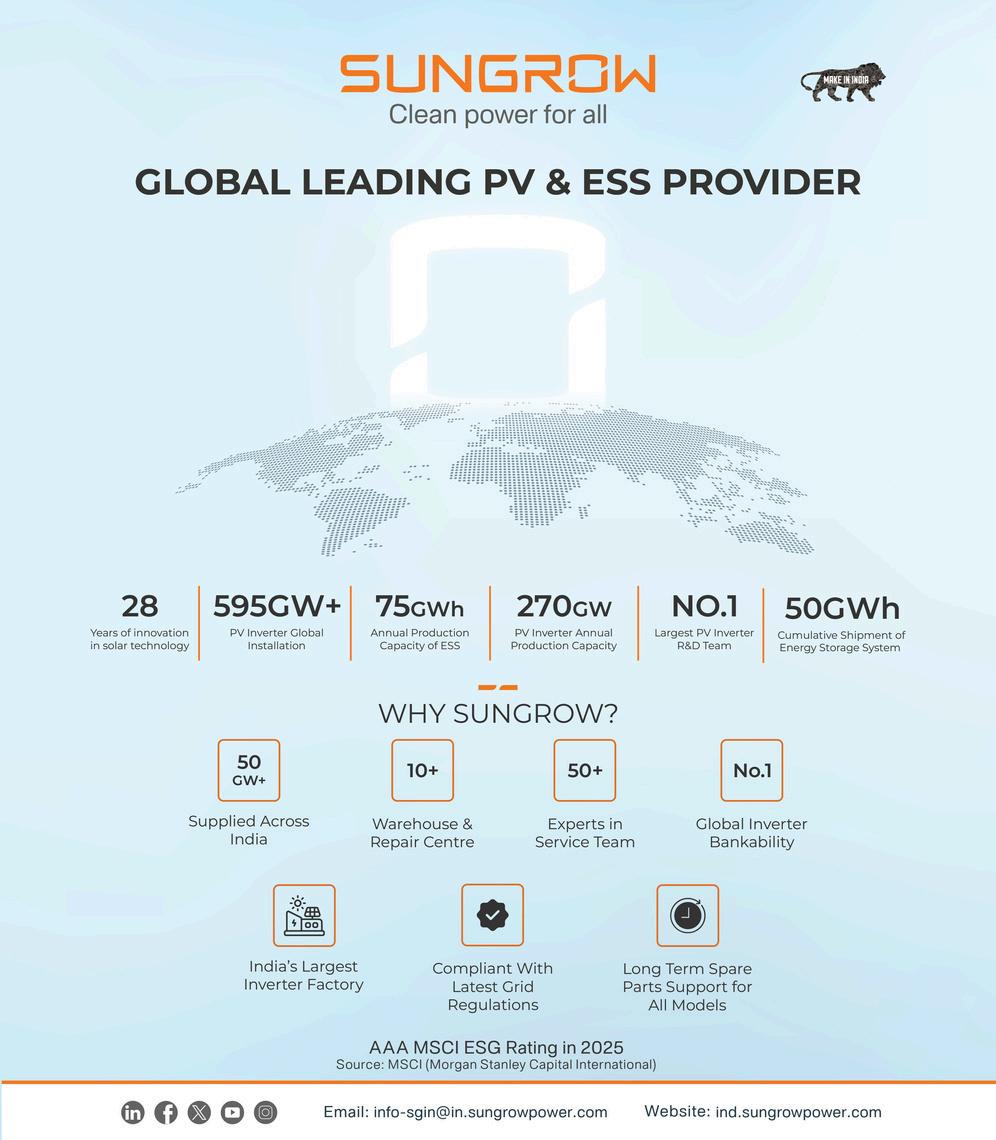




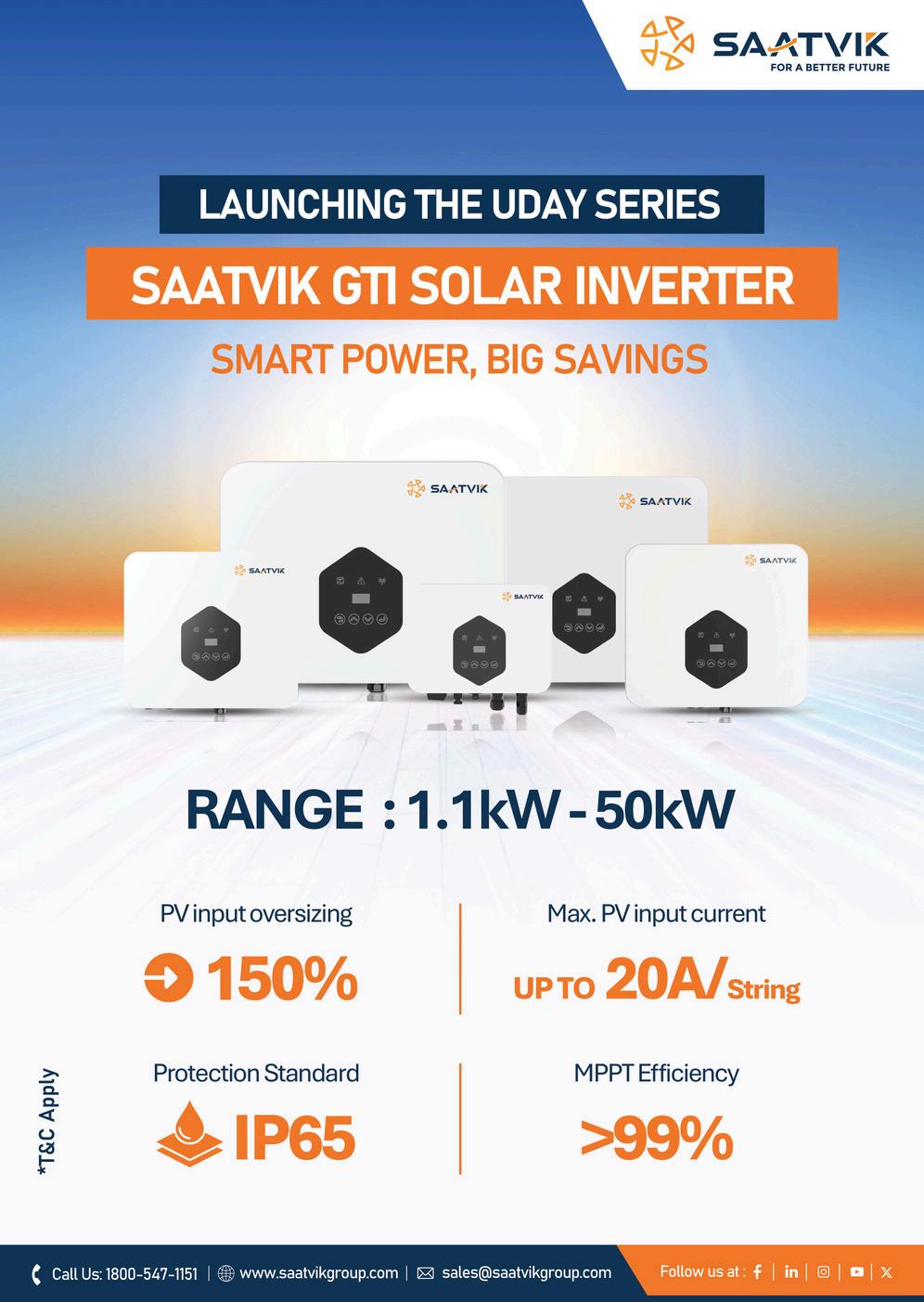

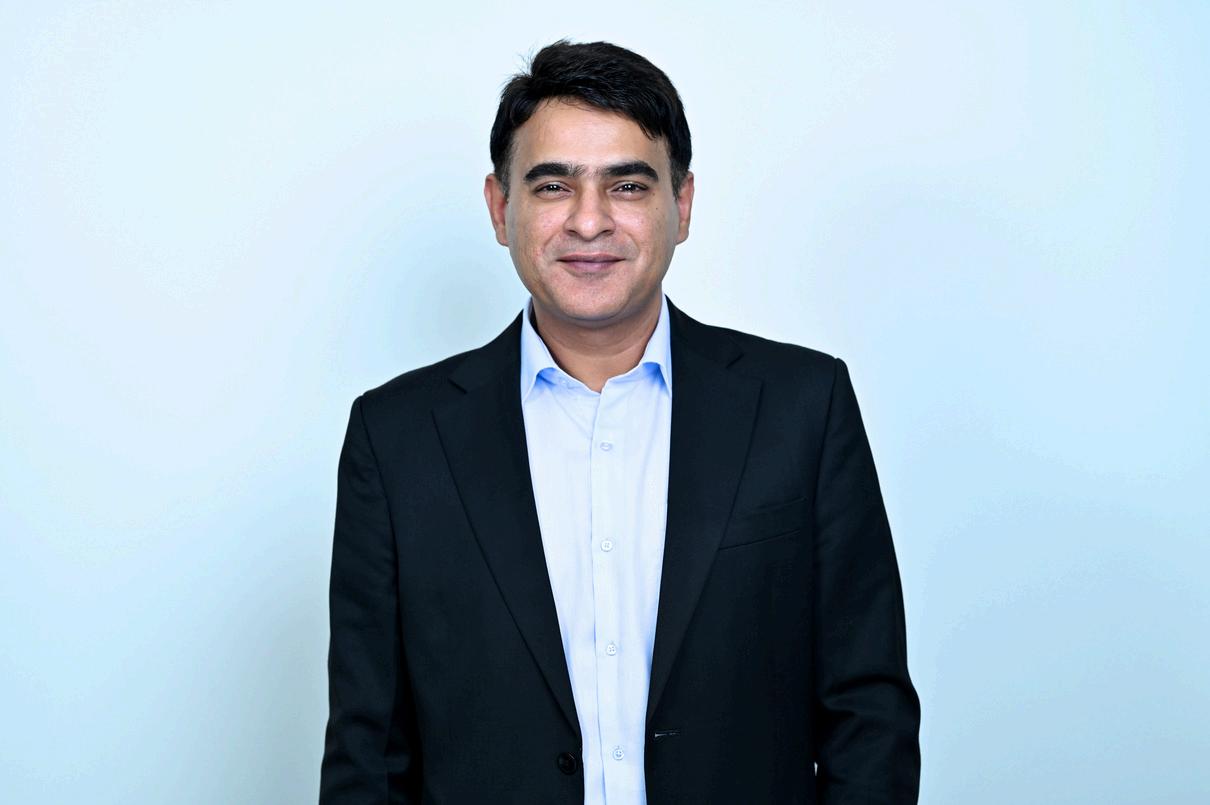

INDUSTRY OPINION



(Retd.)



shal Natani
Radhika
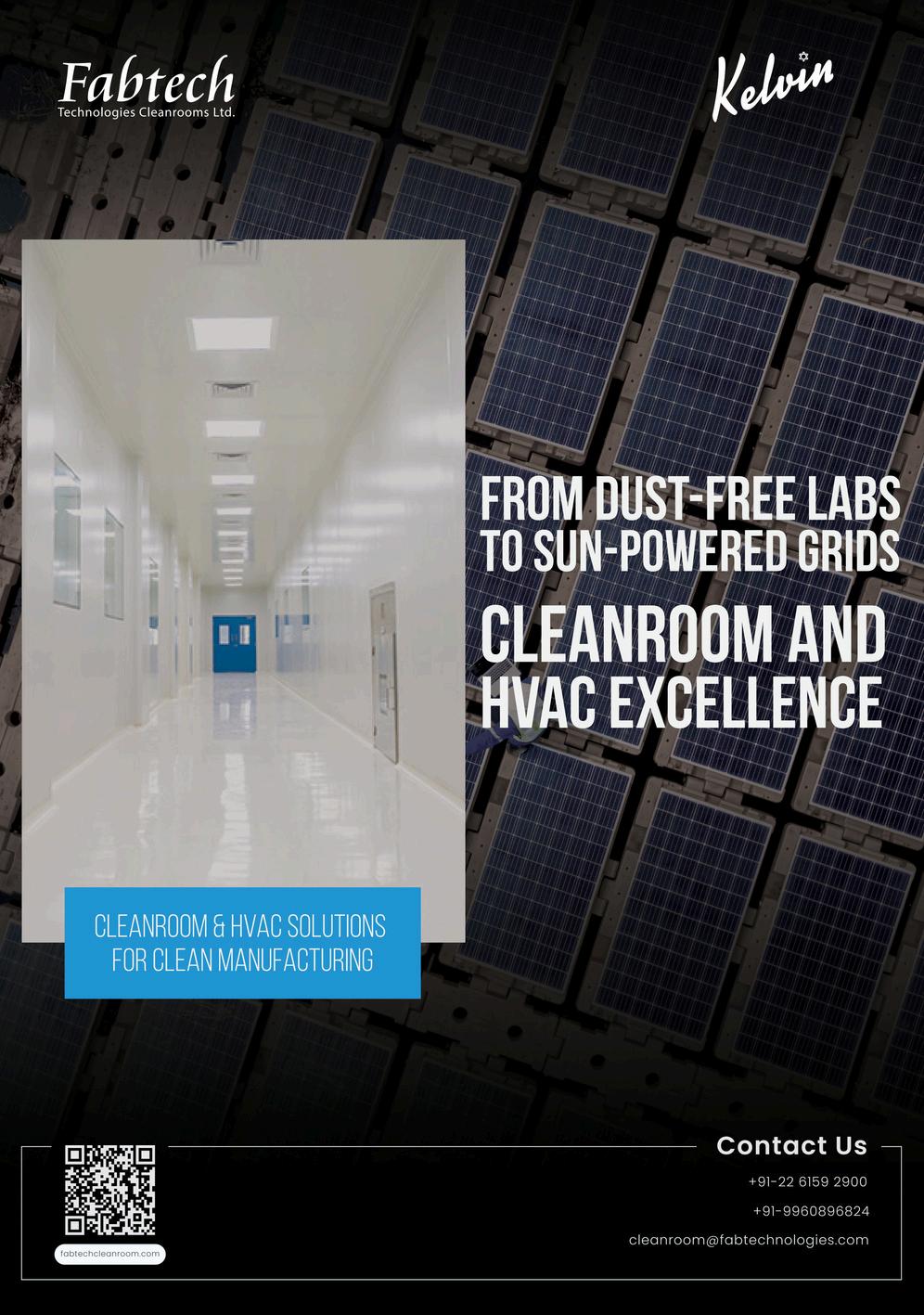


CEA Proposes Draft Regulations To Strengthen India’s Power Infrastructure And Cybersecurity
The Central Electricity Authority (CEA) has issued two draft regulations to enhance India’s power sector safety one focusing on technical standards for constructing electrical plants and lines, and the other on cybersecurity The amendments strengthen material testing, durability, and corrosion resistance, while the cybersecurity rules mandate audits, reporting, and protection of operational systems. Stakeholders can submit comments by November 7, 2025 These measures aim to ensure India’s power infrastructure is secure, reliable, and future-ready

t e e d
y g g y 5
e-auction UPPCL must submit detailed documents before the next hearing on November 4, 2025 If approved, these projects will significantly boost Uttar Pradesh’s solar capacity and reinforce transparency in renewable energy procurement. T l h a TV, print, digital, and local outreach to simplify technical information and encourage participation. Overseen by the Awareness and Outreach Committee, the campaign ensures coordinated execution through NPIA and state agencies, promoting solar adoption and empowering households toward a cleaner, self-reliant energy future.
CSERC Directs Proper Settlement Of Prosumers’ Excess Solar Energy Under Revised Time of Day Tariff In Chhattisgarh
The Chhattisgarh State Electricity Regulatory Commission (CSERC) resolved a dispute over excess solar energy settlement under the revised Time of Day (ToD) tariff. Prosumers faced losses as solar generation coincided with the lowest tariff period CSERC directed CSPDCL to adjust excess energy in the next lower tariff block, effective retroactively from June 1, 2024 This order ensures fair compensation, protects prosumers from financial loss, and strengthens confidence in Chhattisgarh’s renewable energy and net metering framework


INDIA SOLAR NEWS
Think Tank >
India Surges Ahead In Clean Energy: Solar Power And Manufacturing Drive Record Renewable Growth
India’s renewable energy capacity reached 242 6 GW by August 2025, ranking fourth globally and achieving 50% non-fossil capacity five years ahead of target Solar energy leads with 123 GW, growing 132 times since 2015, supported by the PLI Scheme and ALMM Wind capacity stands at 50 GW, with rising exports Despite domestic progress, U.S. tariffs have hindered solar exports Green Hydrogen is emerging as a key focus, with major investments from Adani, JSW, and L&T Strong policy support and industry growth are steering India toward a clean, self-reliant, and globally competitive renewable future.
Global Renewable Power Capacity Set to Double by 2030 Despite Supply Chain and Policy Challenges: IEA
The IEA’s “Renewables 2025” report projects global renewable capacity to more than double by 2030, adding 4,600 GW driven mainly by solar PV, accounting for nearly 80% of growth India is set to become the second-largest market after China Despite strong momentum, offshore wind faces slower growth due to policy shifts and inflation Supply chains remain highly dependent on China, posing diversification challenges Renewables in transport and heating will rise modestly by 2030 The IEA emphasizes grid upgrades, storage, and flexibility to ensure reliable integration as the clean energy transition accelerates worldwide
Bringing Fusion Energy To The Grid: The Next Frontier In Clean Power Transition –Kleinman Centre For Energy Policy
Fusion energy, powering the sun, offers limitless, carbon-free electricity with no meltdown risk Recent milestones, including net energy gain at the National Ignition Facility and advances in superconducting magnets, have boosted private and commercial interest, with companies like Google and Microsoft signing PPAs. Magnetic confinement and inertial confinement fusion are leading approaches, supported by the 2024 ADVANCE Act, clarifying licensing Key challenges remain: public investment in R&D and workforce, high initial costs, and public perception. With global collaboration, strategic funding, and policy support, fusion could complement renewables, providing reliable baseload power and advancing a net-zero, energy-secure future

SBICAPS Report Highlights India’s Battery Storage Sector At Crossroads With Growth, Risks, And Global Lessons
The SBICAPS report highlights India’s battery energy storage (BESS) sector amid volatile spot markets, policy reforms, and global lessons. Lithium-ion costs are falling, enabling four-hour projects aligned with evening peaks, yet land, connectivity, and battery performance challenges delay timelines India lags in domestic manufacturing, relying on imports, unlike China’s integrated model with diversified revenue streams. Nearly 30GW of capacity by FY27 could shift shortages to oversupply, pressuring high-cost projects Sustainable growth requires ancillary service pricing, merchant revenues, and upstream integration. Execution capability, cost reduction, and market diversification will determine winners in India’s evolving BESS landscape
Andhra Pradesh Poised To Lead India
In
Agrivoltaics With 2030 Mission
Andhra Pradesh is exploring agrivoltaics to reduce the ₹10,500crore agricultural electricity subsidy and boost farmer incomes The “Potential of Agrivoltaics in Andhra Pradesh” blueprint envisions a 500MW Agrivoltaics Mission 2030, leveraging 14.7% wasteland and 49.55lakh hectares of farmland. Farmers could earn ₹40,000–₹50,000 per acre annually, with revenues of ₹15–18lakh per MW under developer or FPO models While capital costs are 20% higher than conventional solar, clear tariffs and CAPEX benchmarks are essential. The SAMPADA framework provides regulatory and financial guidance Successful implementation could position the state as a national leader in food-energy convergence



INDIA SOLAR NEWS
Think Tank >
India’s Nuclear Push Aims For 100 GW By 2047 To Secure Low-Carbon Energy Future
India has unveiled a roadmap to achieve 100 GW of nuclear energy capacity by 2047 under the “Viksit Bharat” mission, marking a major step toward energy security and clean power Supported by the 2025 Union Budget’s Nuclear Energy Mission, the plan includes key reforms to the Atomic Energy Act and Civil Liability for Nuclear Damage Act, enabling private and foreign participation Challenges include fuel supply, financing, and regulatory efficiency. The government aims to attract investments, foster innovation, and develop indigenous reactor technology With timely reforms and execution, India’s nuclear expansion could ensure a reliable, low-carbon energy future
India Strengthens Its Solar Lead with 127 GW Installed and 29.46 GW Added In 2025
India’s solar energy capacity reached 63 89 GW as of January 2023, making it the largest contributor to the country’s 121 54 GW renewable energy mix. Despite COVID-19 challenges, solar installations grew steadily, supported by government incentives, solar parks, and falling generation costs down 79% in a decade Solar accounts for 53% of total renewables, followed by wind at 41.98 GW. With a 2030 target of 450 GW of renewables, including 280 GW from solar, India is advancing rapidly toward clean energy and its 2070 net-zero goal
India Surges Ahead In Clean Energy: Solar Power And Manufacturing Drive Record Renewable Growth – Rubix Data Sciences
India’s renewable energy capacity reached 242.6 GW by August 2025, ranking fourth globally and achieving its 50% clean energy milestone five years early Solar leads the transition with 123 GW installed, a 132-fold increase since 2015, supported by ALMM and PLI schemes that boosted module manufacturing to 100 GW Wind power stands at 50 GW, with rising turbine exports The country is also advancing small hydro and bioenergy reforms while promoting Green Hydrogen under the National Mission, targeting 10% of the global market. With strong policy, investments, and innovation, India is accelerating toward a sustainable, self-reliant energy future
Global Renewable Power Capacity Set to Double by 2030 Despite Supply Chain and Policy Challenges: IEA
According to the IEA’s Renewables 2025 report, global renewable power capacity is projected to more than double by 2030, adding 4,600 GW equal to the combined capacity of China, the EU, and Japan Solar PV will drive nearly 80% of this growth, supported by falling costs and policy incentives. India is set to become the second-largest growth market after China Despite supply chain and grid challenges, renewables’ resilience remains strong The report calls for greater investment in grid infrastructure and diversification. Renewables’ role in transport and heating will also rise modestly, reinforcing global progress toward clean energy goals

Bringing Fusion Energy To The Grid: The Next Frontier In Clean Power Transition
Fusion energy, which powers the sun, is emerging as a potential limitless clean power source Recent breakthroughs, such as NIF’s net energy gain and advances in superconducting magnets, have boosted global confidence. Over 53 startups have raised $9.7 billion, led by Commonwealth Fusion Systems, targeting grid-scale power by the 2030s The 2024 ADVANCE Act eased fusion licensing, promoting private investment However, challenges remain high costs, limited tritium supply, and workforce gaps. With coordinated public–private investment, global collaboration, and clear communication, fusion could soon deliver safe, carbon-free, and sustainable energy, supporting a secure net-zero future.


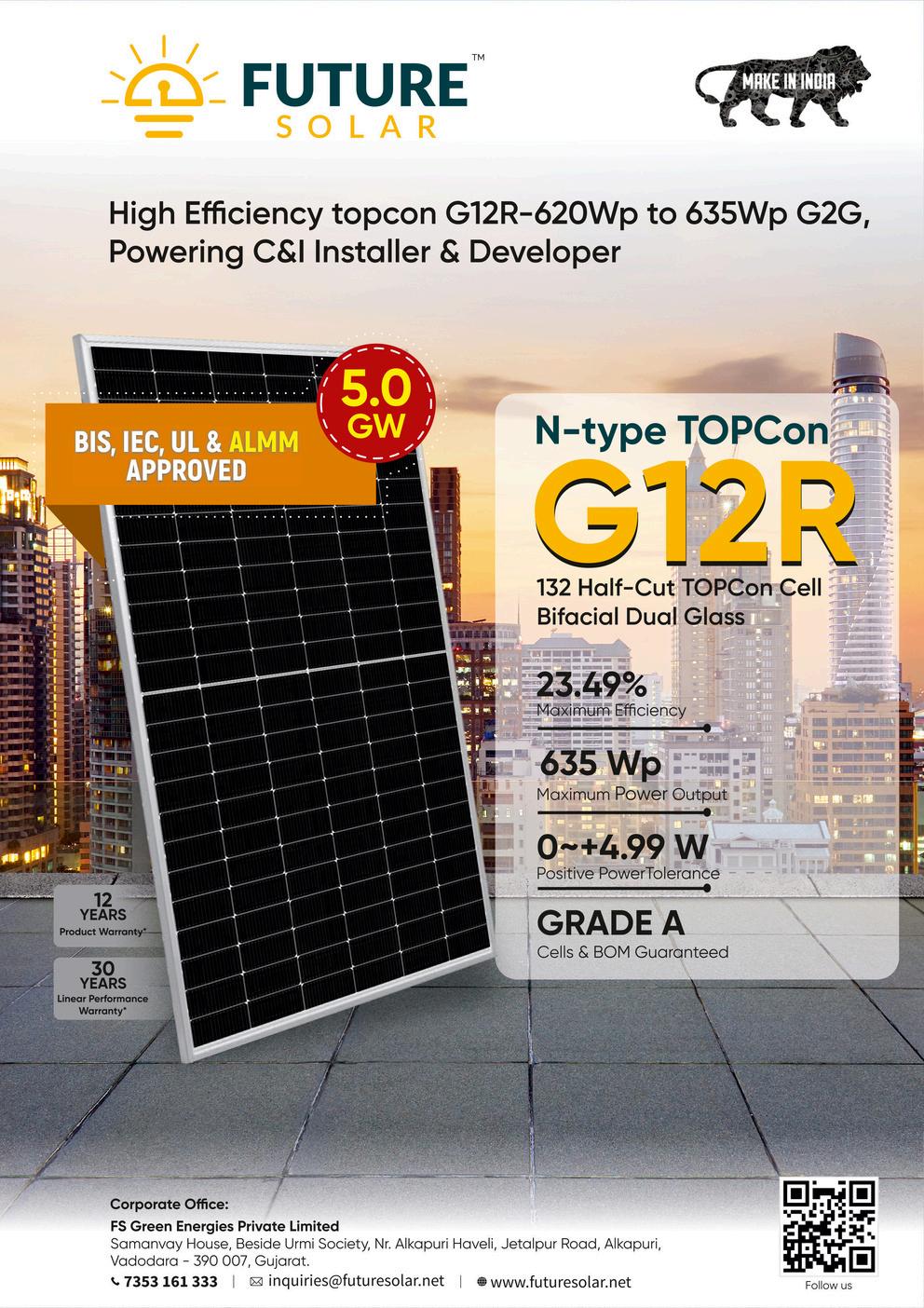

Think Tank >
INDIA SOLAR NEWS
Inclusive Pathways For Clean Energy: IRENA’s Toolkit On Participatory Planning
IRENA’s toolkit on participatory long-term energy planning guides governments in inclusive clean energy transitions Engaging diverse stakeholders including prosumers, communities, civil society, and businesses builds trust, gathers varied inputs, and aligns scenarios with political realities. Structured around knowledge gathering, co-creation, and dissemination, the toolkit offers tools like workshops, consultations, and interactive platforms. Case studies from 13 countries show tailored approaches, from Brazil’s virtual debates to Canada’s Energy Modelling Hub Challenges include tokenistic engagement, limited feedback, and institutional constraints. Leveraging AI and digital tools can enhance transparency. Participatory planning fosters legitimacy, equity, and trust, accelerating effective, inclusive energy transitions
IRENA Launches Toolkit to Strengthen Stakeholder Participation in National Energy Planning
IRENA’s new toolkit, “Participatory Processes for Strategic Energy Planning,” guides national planners in integrating stakeholder engagement into long-term energy strategies. Emphasizing inclusivity, transparency, and early involvement, it advocates continuous participation from planning through implementation to ensure social legitimacy, trust, and durable strategies. The toolkit highlights legal and institutional frameworks to embed feedback into decision-making and balance diverse interests Moving away from top-down models, it equips planners to foster dialogue, consensus, and co-creation. By engaging communities, industry, and civil society, the
Tech >
Pushing Photovoltaics Further: Quantum Dot Tech Arrives In Thin-Film Solar
UbiQD has signed a multi-year agreement with First Solar to supply fluorescent quantum dots for thin-film bifacial PV modules, marking the first high-volume solar application of QDs. The technology enhances bifacial efficiency and energy capture Supported by $20 million Series B funding, UbiQD plans a largescale New Mexico facility, advancing commercial quantum dot deployment in solar energy.
Grid-Forming Inverters Drive SUREVIVE’s Innovation
For Solar-Dominated
Grids
Germany’s Project SUREVIVE is testing grid-forming inverters and battery storage in real distribution grids to ensure voltage and frequency stability in solar-powered networks Led by Westnetz and Fraunhofer ISE, the project validates 20MW/55MWh systems through lab pre-tests and simulations. Results will guide best practices for inverter-based grids, supporting Europe’s transition to stable, renewable energy networks
New Research Shows Star-Shaped Receivers Cut LCOH By 30% And Reduce CAPEX In CSP Plants
Researchers from Politecnico di Milano and QUT developed starshaped solar receivers for CSP plants, achieving 30% lower Levelized Cost of Heat and up to 75% reduced CAPEX. The design enables double-sided irradiation, reduces thermal stress, extends lifespan, and improves energy capture by 5% Using fewer tubes and cost-effective materials it enhances efficiency and makes CSP more economically competitive.
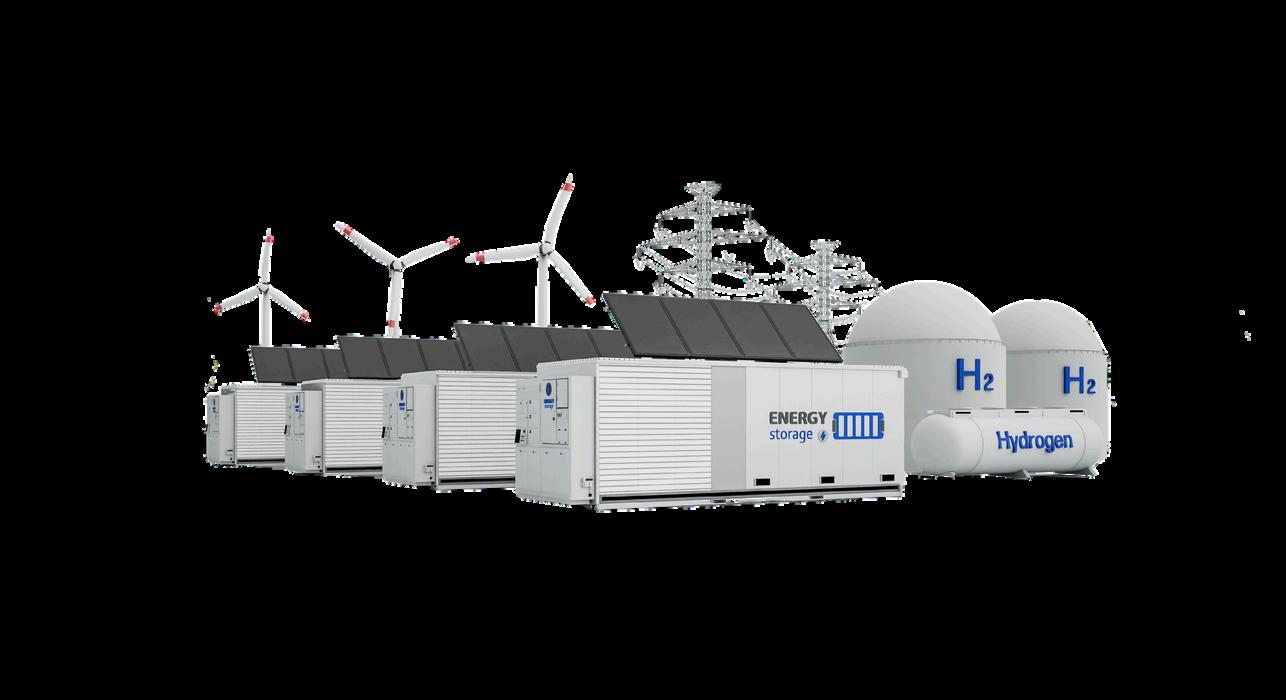
Probabilistic Model From TU Delft nces Forecasting For Urban Residential Fleets
ft researchers developed a probabilistic framework to residential solar PV output in dense urban areas without e installation data Using the Sky View Factor, the model es shading and irradiance quickly and accurately, d against real-world data. Privacy-preserving and e, it enables fleet-level forecasting, real-time grid g, smart city energy management, and future integration based solar predictions
RESEARCH S T O R Y
Scaling Solar With Agri-PV And Floating PV: New Tech Pathways For Business Growth
India’s solar journey has witnessed remarkable growth over the past decade, but to sustain momentum and achieve ambitious renewable energy targets, the sector must look beyond conventional ground-mounted projects Two emerging technologies, agrivoltaics (Agri-PV) and floating solar (Floating PV), are creating new opportunities for business growth by addressing land constraints, improving energy yields, and promoting resource efficiency. These innovative models represent a pathway that combines technology advancement with social and environmental benefits
Agri-PV offers a way to overcome the growing challenge of land availability for large solar projects By integrating solar panels with agricultural activities, the same land can serve dual purposes generating clean energy while supporting crop cultivation The design ensures that panels are installed at an elevated height or with spacing that allows sunlight to reach the crops below For India, where agriculture remains the backbone of the economy, this model aligns energy transition goals with farmer livelihoods Studies have shown that certain crops benefit from partial shading, reducing water stress and improving yield stability. Agri-PV can also provide farmers with an additional income stream from leasing land or sharing project revenues, while developers benefit from access to land that may otherwise be unavailable for exclusive solar use. This creates a win-win model for rural communities and investors alike.
Floating solar, on the other hand, offers an innovative solution to India’s growing water-energy nexus challenges By installing solar panels on reservoirs, lakes, or dams, floating PV reduces the need for vast stretches of land and simultaneously helps conserve water The panels act as a cover on water surfaces, reducing evaporation losses, which is particularly valuable in water-scarce regions Additionally, the cooling effect of water enhances panel efficiency, leading to higher energy generation compared to groundmounted systems India has large untapped potential in reservoirs attached to hydropower dams and irrigation systems, offering an excellent opportunity to scale floating PV projects. States like Madhya Pradesh, Maharashtra, and Kerala have already initiated projects that are showcasing the viability of this approach.
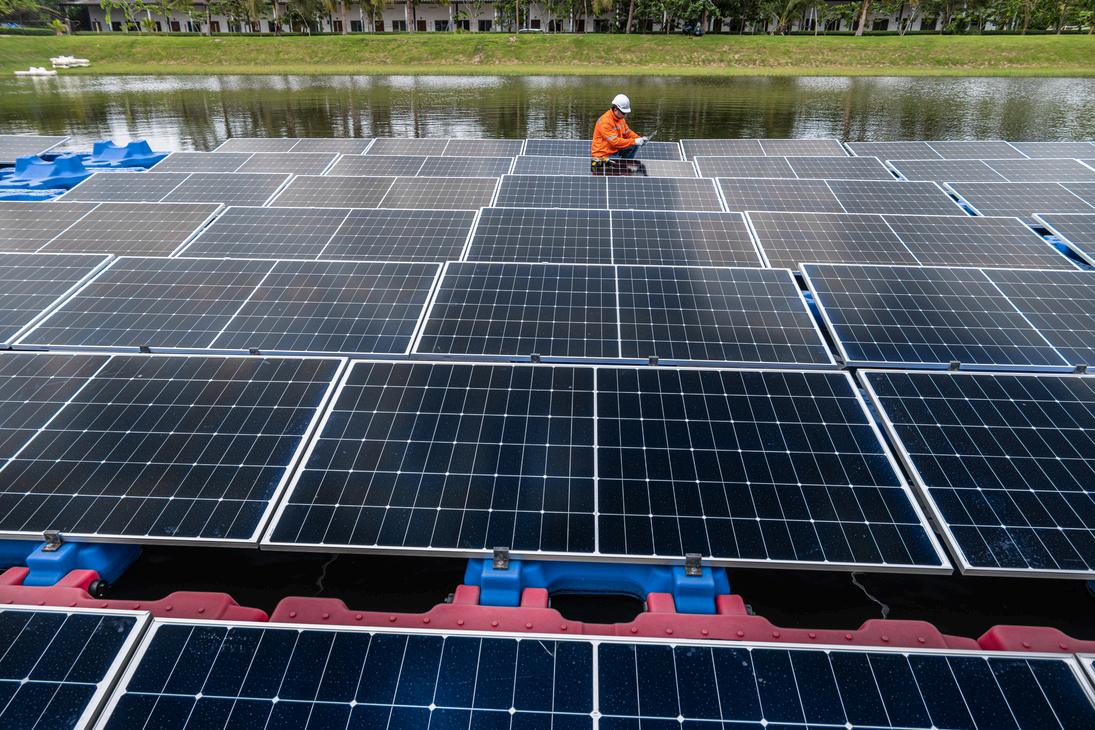
For businesses, these two technologies represent a strategic growth pathway Developers entering the Agri-PV segment can build partnerships with local farming communities, offering long-term lease arrangements that provide steady returns while ensuring social acceptance of projects Financial institutions and policymakers are beginning to recognize the dual benefits of Agri-PV, and targeted incentives could unlock more investments In the case of floating solar, project developers have the opportunity to collaborate with water utilities, irrigation bodies, and hydropower operators to design hybrid models that improve overall infrastructure utilization Combining floating solar with existing hydro projects can enable better grid stability by blending variable solar output with hydropower flexibility The success of scaling Agri-PV and floating PV in India will depend on supportive policies, innovative financing, and technological adaptations suited to local conditions Standardization of design, affordable anchoring systems for floating PV, and crop-specific Agri-PV structures are crucial for lowering costs and ensuring reliability Moreover, robust business models that emphasize community engagement, water management, and agricultural productivity will make these projects sustainable in the long run
As India races towards its solar capacity targets, integrating Agri-PV and floating PV into mainstream development can expand the market beyond traditional land-based installations. These models not only unlock new business opportunities but also contribute to food security, water conservation, and rural development. The future of the Indian solar PV market will increasingly rely on such innovative pathways, where technology growth aligns seamlessly with environmental stewardship and community empowerment

EXPERT SPOTLIGHTS
NARESH BALUJA
ChiefCommercialOfficer(RenewablesandBESS) ENGIEIndia
LeadingIndia’sGrowthinSolarStorage andRenewables
KEY HIGHLIGHTS:
Delivering large-scale projects across states with reliable execution and agreements
Integrating BESS and hybrid solutions for round-the-clock power and stability
Training local workforce and implementing initiatives to build trust and impact
QHow is ENGIE positioning its leadership in India’s fastgrowing solar PV market?
ENGIE is setting the benchmark in India’s solar PV market by combining scale with disciplined execution and secure offtake agreements Our portfolio spans 2 4 GW across 23 projects in 7 states, including 1.1 GW operational capacity and 1 35 GW under construction, supported by over €1 billion in investments to date
Our strength lies in delivering results in a complex market We proactively manage risks related to permitting, grid connectivity, and compliance leveraging decades of global expertise By engaging early and consistently with DISCOMs, regulators, and local authorities, we align with policy frameworks and maintain project timelines This approach proved resilient during the pandemic, enabling us to commission large-scale assets without compromising safety or deadlines.
We also differentiate through performance Advanced digital forecasting and predictive O&M tools enhance yield and minimize curtailment Our leadership in ESG builds trust: ENGIE India earned the Sustainable Energy Transition Label in December 2024, 80% of our workforce is locally hired, and over 600 solar technicians have been trained, strengthening capabilities on the ground.This integrated model combining reliable capacity, strong counterparties, datadriven operations, and deep stakeholder engagement positions ENGIE as a clear leader in India’s renewable energy landscape
QWhat role will ENGIE play in shaping competitive solar capacity expansion to 7 GW by 2030?
ENGIE is driving the competitive scale-up of solar energy in India, with reliability and bankability at its core We are targeting 7 GW of installed renewable capacity by 2030, with approximately 75% of new additions coming from solar, supported by a planned investment of around €3.5 billion.

Our approach is twofold:
Integrate Battery Energy Storage Systems (BESS) into future solar and hybrid projects to enhance dispatchability, improve grid stability, and support round-the-clock and hybrid procurement
Create demand certainty and cost efficiency for buyers through our Supply & Energy Management vertical, offering Virtual Power Purchase Agreements (VPPAs), portfolio optimization, and monetization of green attributes such as Renewable Energy Certificates (RECs) and carbon credits
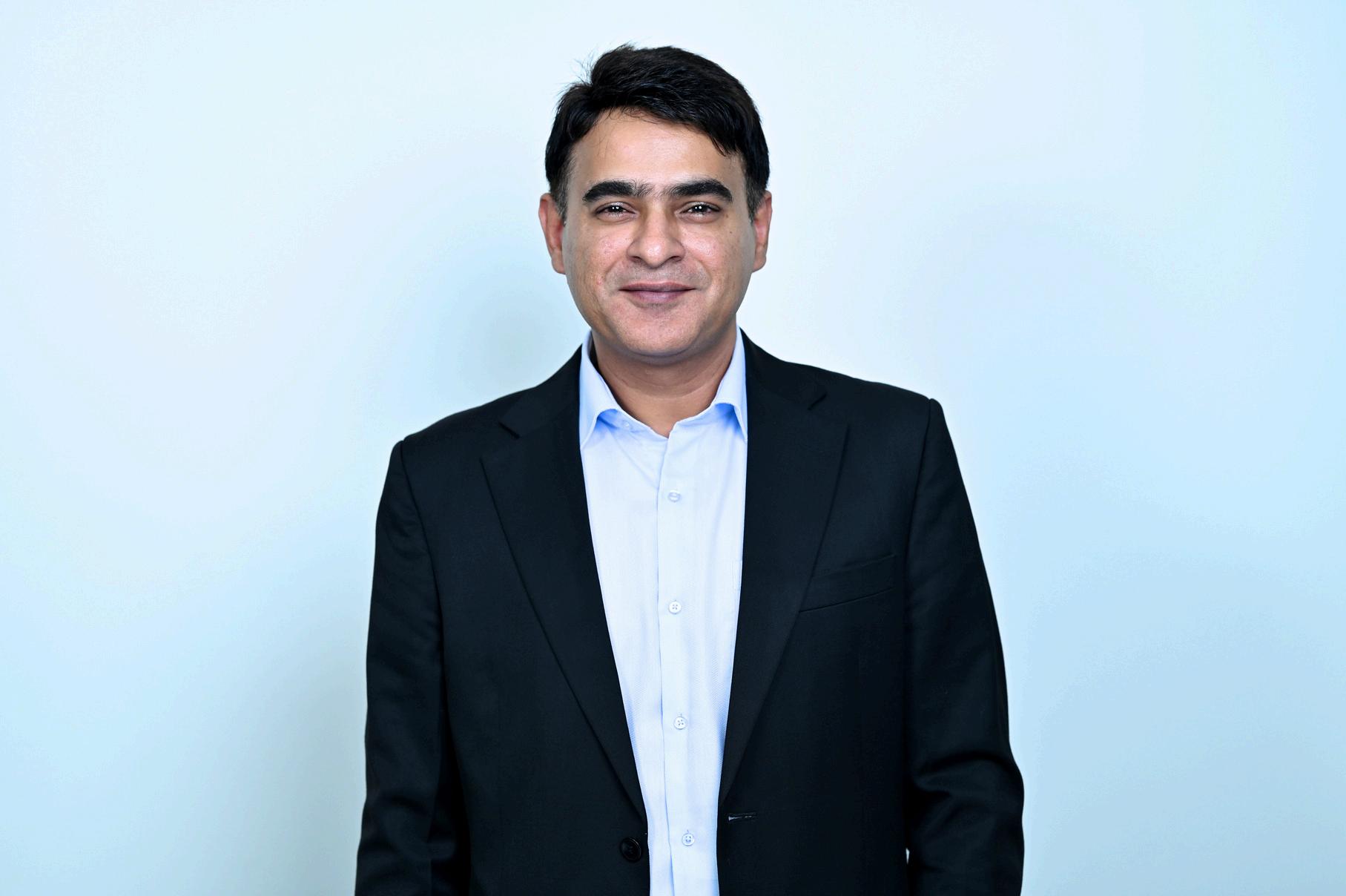
1.GUVNL-I (Raghnesda Solar Power Plant) – Resilience in Action
The 200 MW Raghnesda Solar Power Project in Gujarat’s Banaskantha district exemplifies ENGIE’s ability to deliver under pressure Commissioned in August 2021 amidst the COVID-19 pandemic, the project was completed in just 18 months with a zeroinfection record, highlighting our uncompromising commitment to health, safety, and operational continuity
We are expanding our corporate PPA offerings to enable commercial and industrial (C&I) consumers to transition to clean energy with predictable pricing and measurable decarbonization outcomes. In parallel, we emphasize standardized, lender-grade contracting and close collaboration with utilities, offtakers, and financiers to accelerate the adoption of solar-plus-storage solutions By combining ambition with local execution and diversifying across solar, wind, and global storage-integrated projects ENGIE is helping India scale up renewable capacity while enhancing system reliability, affordability, and investor confidence
QHow are you leading market growth through large-scale solar projects in Gujarat and other regions?
ENGIE’s India journey spans three decades, with the last ten years focused on scaling renewables from our first 5 MW solar plant in Rajasthan (2014) to a 2 4 GW portfolio across 23 projects in 7 states Gujarat is a core growth hub: our 400 MW GUVNL-II project, now under construction, is our largest in India and reflects our ability to deliver complex utility-scale assets at speed We have built and operated marquee projects that create durable capacity and a strong execution template
2
Developed by our wholly owned subsidiary, Electro Solaire Pvt. Ltd. (ESPL), the plant supplies approximately 546 GWh of clean energy annually, offsetting over 387,000 tons of CO₂ emissions. It operates under a 25-year PPA with Gujarat Urja Vikas Nigam Limited (GUVNL), and continues to set benchmarks for resilience-led project delivery
1 Kadapa Solar Power Project – Scale with Precision
Spanning 5,930 acres in Andhra Pradesh’s Kadapa Ultra Mega Solar Park, this 250 MW project is one of India’s largest commissioned projects till date Developed by SolairePro Urja Pvt. Ltd. (SPUPL), it was commissioned in two phases between June 2019 and March 2020 The project uses advanced string inverters to enhance efficiency and system accessibility, and supplies power under a 25year PPA with NTPC Limited.
3.
1 Mirzapur Solar Plant – A Symbol of Indo-French Collaboration
Jointly inaugurated by Prime Minister Narendra Modi and French President Emmanuel Macron, the 75 MW Mirzapur Solar Plant is a landmark in bilateral renewable cooperation. Spread across 385 acres in Dadar Kalan village, the plant uses over 318,000 solar panels to generate 190 million units of clean electricity annually Commissioned in March 2018, it remains one of Uttar Pradesh’s largest solar projects.
4
1 Bhadla Solar Project – Innovation in Harsh Environments
Located in Rajasthan’s high-irradiation Thar Desert, the 140 MW Bhadla Solar Project was the first in India to deploy water-free robotic cleaning systems These autonomous robots, remotely controlled via a cloud-based platform, combat heavy dust accumulation from desert storms and are expected to save over 2 billion litres of water over the plant’s 25-year lifecycle
It is this mix of scale, reliable long-term partnerships, and innovation in execution that anchors our leadership position. Looking ahead, we are integrating battery energy storage into upcoming solar and hybrid builds to enhance dispatchability and grid stability, strengthening the value of large-scale solar in Gujarat and beyond.
QHow is ENGIE creating market leadership through financing models and longterm partnerships?
At ENGIE, we see financing models as central to scaling India’s renewable energy transition Our focus is on building structures that make projects bankable, attractive to investors, and viable at scale On the financing side, we explore blended mechanisms such as viability gap funding and long-term PPAs with storage components to bridge cost gaps and improve project feasibility. We also leverage our Green Bond Framework to raise capital dedicated to climate-aligned investments, while tapping into long-tenor funding from international banking partners These approaches help reduce risk, lower the cost of capital, and accelerate renewable deployment
Equally important are long-term partnerships We work with corporate buyers to structure innovative Power Purchase Agreements that increasingly incorporate storage, enabling them to secure reliable clean power while reducing grid dependency. On the public side, we collaborate with SECI, NTPC, and state utilities to design viable, storage-backed renewable solutions aligned with national policy goals Together, these financing models and partnerships form the foundation of our leadership in India’s clean energy market, ensuring we can deliver both scale and reliability as the country advances toward its 500 GW renewable target

EXPERT SPOTLIGHTS
QHow do you see ENGIE driving market leadership with innovations like storage, hybrids and floating solar?
At ENGIE, storage and hybrids are central to delivering reliable, cost-effective renewable power at scale We are targeting 10 GW of battery capacity globally by 2030 and have already commissioned 5 2 GW By integrating BESS with our solar and wind assets, we improve dispatchability, enable round-the-clock clean power, and strengthen grid stability “ENGIE has scaled its U.S. Battery Energy Storage portfolio to 1 8 GW operational capacity across 24 projects as of September 2024, reinforcing grid reliability and enabling 24/7 clean power delivery in North America
Our approach is technology-led and execution-focused:
AI and smart grid control: We deploy AIdriven energy management to maximise utilisation and lower operating costs Our battery optimisation platform manages 40+ systems using real-time data, advanced analytics, and machine learning to decide when to charge and discharge based on carbon impact, grid constraints, and battery life This has improved fleet availability by 5–10 percent and enhanced economic returns. Advanced forecasting aligns production with customer consumption and market conditions, reducing total cost of ownership and improving decision-making
Hybrid energy systems with storage: As the energy landscape evolves, ENGIE is sharpening its focus on hybrid solutions and storage-backed projects that transform variable solar and wind into intelligent, dispatchable power enhancing grid stability while improving the commercial viability of renewable assets.
Operational intelligence at scale: Our Fleet Performance Diagnostic Centre provides realtime monitoring, performance analytics, and predictive maintenance across solar assets for higher uptime and data-driven decisions
Diverse storage formats: Drawing on global experience, we develop co-located and stand-alone storage that can reinject energy to the grid, demand-side batteries for industrial and residential users, and modular, scalable setups integrated with smart grids for real-time balancing and dispatch optimisation
Efficiency in tough environments: In remote or water-scarce regions we use robotic cleaning to maintain peak solar performance while conserving water.
To complement generation and storage, our Supply and Energy Management vertical offers VPPAs, portfolio optimisation, green attribute monetisation including RECs and carbon credits, and strategic advisory This combination of BESS integration, digital optimisation, hybrid system design, and fit-for-purpose contracting positions ENGIE to scale dependable clean energy and support India’s transition to a resilient 24/7 renewable ecosystem
QHow are you leading market growth through large-scale solar projects in Gujarat and other regions?
ENGIE is committed to India for the long term, with a goal of building 7 GW of renewable capacity. Our credibility stems from consistent delivery, transparent performance data, and visible community impact
In Gujarat, we’ve enhanced school infrastructure, provided access to safe drinking water, and built a new school shed benefiting over 400 students. In Tamil Nadu, we empower women beekeepers through training and year-long mentoring boosting both income and biodiversity
Through our strategic partnership with the National Skill Development Corporation (NSDC), we’ve trained over 600 youth across Rajasthan and Andhra Pradesh, equipping them with job-ready skills and connecting them directly to employment opportunities in the renewable energy sector. In April 2024, we hosted a Job Fair and Felicitation Ceremony in Bikaner, celebrating their achievements and facilitating direct engagement with leading industry recruiters We complement these efforts with proactive policy engagement, strong offtaker partnerships, and local capability building The result is a partner that not only delivers reliably today but also helps shape the energy market India needs for tomorrow
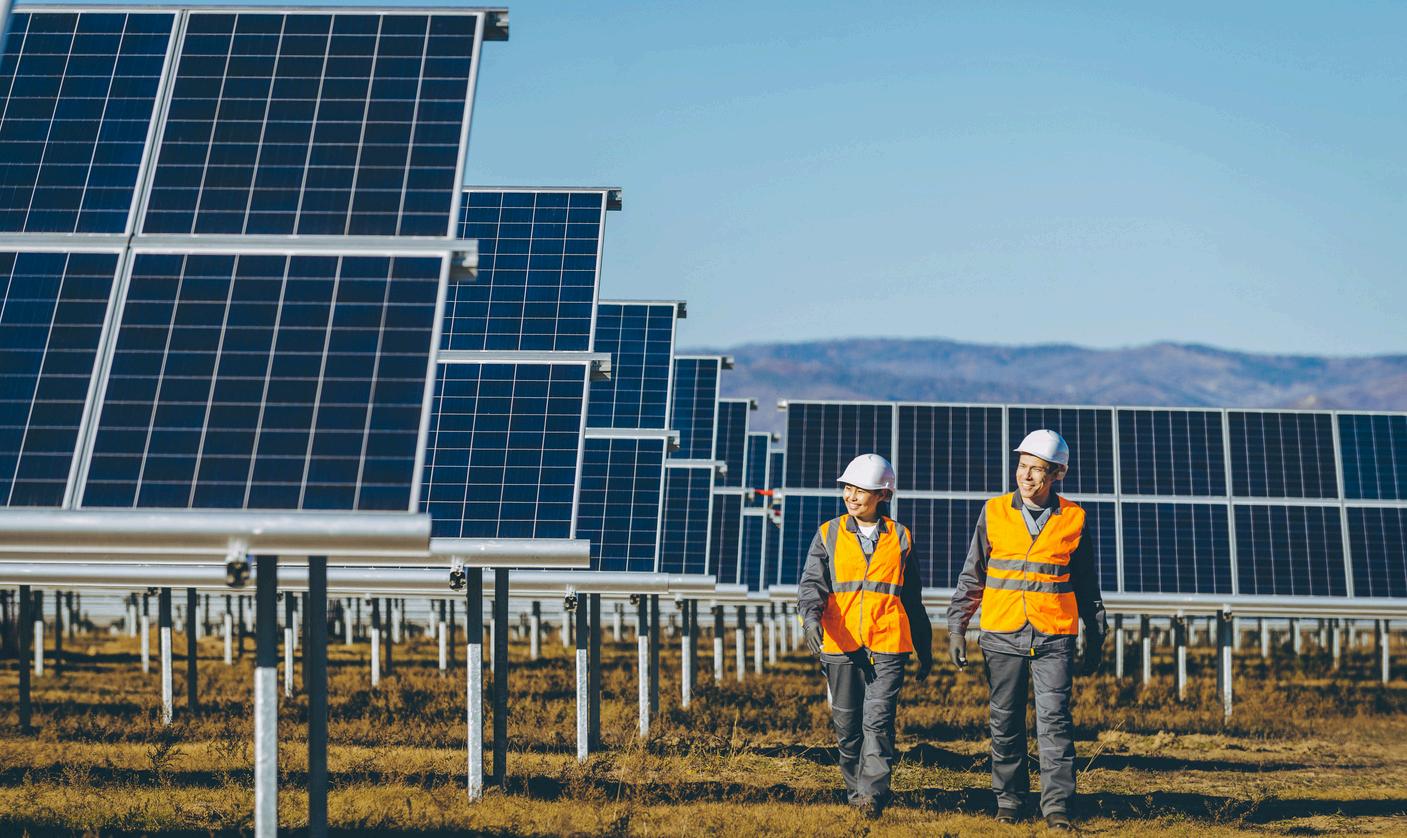
RESEARCH S T O R Y
Storage + Solar: Business Leadership In Driving Hybrid Technology Solutions For A Reliable Grid
Storage and solar are becoming the most important combination for the Indian energy sector, with hybrid technology solutions emerging as a strong pathway to achieve grid reliability India has made rapid progress in scaling solar PV, but as penetration increases, the challenges of variability and intermittency are becoming more visible. The integration of energy storage, particularly battery systems, with solar plants is proving to be the most effective answer to these challenges. This hybrid approach not only ensures continuous and reliable power supply but also strengthens grid stability, a critical requirement for India’s long-term renewable energy growth
The Indian solar PV market is moving from capacity addition targets to building efficiency, resilience, and flexibility into the system Large-scale solar projects are already being designed with integrated storage, and policymakers are encouraging developers to consider storage as part of project planning rather than an afterthought The Ministry of Power and the Solar Energy Corporation of India have released tenders specifically focused on renewable plus storage projects, signaling the direction in which the market is heading These projects can deliver round-the-clock renewable power, a critical milestone for reducing dependence on fossil fuels and achieving India’s ambitious net-zero goals.
From a business leadership perspective, the transition toward hybrid technology is being driven by forward-looking companies that recognize the value of offering complete energy solutions rather than just standalone generation Leaders in the Indian solar PV market are not only investing in advanced storage technologies but also developing business models that make hybrid projects commercially viable The cost of battery storage is falling steadily, and with economies of scale, hybrid projects are becoming more competitive compared to conventional thermal generation This is an important signal to industries and distribution companies looking for reliable clean power at affordable prices
Hybrid technology solutions also open new opportunities for distributed energy. Rooftop solar combined with storage is beginning to appeal to commercial and industrial consumers who need uninterrupted power supply without relying on
expensive diesel generators By pairing solar PV with storage, businesses can optimize energy use, reduce peak demand charges, and maintain energy security even during grid disruptions In rural areas, storage plus solar can accelerate electrification and provide reliable power for agriculture, education, and small-scale industries, creating a positive impact on local economies
Grid operators also benefit from solar plus storage, as hybrid systems can help manage peak loads, stabilize frequency, and balance supply-demand fluctuations This reduces the stress on transmission infrastructure and lowers the need for costly grid upgrades As India continues to expand its renewable energy base, such flexibility will be vital for ensuring a smooth transition to a cleaner grid
The leadership role of Indian companies, combined with strong government support, is shaping a new era of energy innovation By focusing on hybrid solutions, India is building a model that not only addresses technical challenges but also creates long-term value for consumers and investors The combination of storage and solar is no longer just a future possibility it is becoming the backbone of a reliable, affordable, and sustainable energy system for the country


SANJEEV JAIN EXPERT SPOTLIGHTS
ChiefEngineer(Retd.)
ChhattisgarhStateRenewableEnergyDevelopmentAgency(CREDA)
India’sSolarPVGrowthPathwayTowards
OpportunitiesAndChallenges
KEY HIGHLIGHTS:
India surpasses 100 GW solar capacity, driven by policy and investment.
Emerging solar hubs include Maharashtra, Telangana, Uttar Pradesh, and Madhya Pradesh
Technological innovations and PPPs are fueling sustainable growth in the solar PV sector
QHow do you assess the growth trajectory of the Indian solar PV market, and what are the key factors driving this expansion?
India's solar PV market is undergoing an accelerating growth, surpassing 100 GW of installed capacity in early 2025, with significant future growth projected This expansion is fueled by ambitious government targets, favourable policy frameworks, declining module costs, and an enhancement in cell efficiency Key drivers also include increased energy demand, supportive financialincentives,thedevelopmentoflarge-scale solar parks and rooftop solar, a growing domestic manufacturingbase,andinternationalinvestment.
QWhich regions or states in India do you see as emerging hubs for solar PV deployment in the next 3–5 years, and why?
Emerging hubs for solar PV deployment in the next 3–5 years include Maharashtra, Telangana, Andhra Pradesh, Uttar Pradesh, and Madhya Pradesh, driven by strong government policies, high solar irradiance, rapid industrialisation, and initiatives to integrate solar into agriculture and residential sectors.
While established leaders like Rajasthan and Gujarat will continue to grow, these states are poised for significant expansion due to their potential, policy support, and focus on diversified solarapplications.
What challenges do developers and investors face in the Indian solar market, and how can these be addressed?
Indian developers and investors face challenges, including high capital costs, supply chain dependency on imported components, grid integration issues with unreliable infrastructure, andcomplexlandacquisitionprocesses
To sustain growth, the sector needs strategic public-private partnerships, advancements in energy storage and smart grid technology, improved financing mechanisms, supportive policies that enforce Renewable Purchase Obligations (RPOs), and significant investment in developing a robust domestic manufacturing and skilledworkforce
How do you foresee policy reforms, such as rooftop solar and bidding, shaping market dynamics in India? Q
Policy reforms like rooftop solar initiatives and competitive bidding will shape India's market dynamics by accelerating decentralized power generation, enhancing grid stability through flexible procurement, driving down costs for renewable energy, and promoting overall market transparency and investor confidence Rooftop solar will increase the share of distributed energy, improving DISCOMs' forecasting, while competitive bidding will attract investment and ensure cost-effective power procurement. Integrated approaches to rooftop solar and competitive bidding are instrumental in helping India achieve its target of 500 GW of renewable energy capacity by 2030 and contribute to its netzerogoals.
How are advancements in solar PV modules and storage impacting adoption and investment in India?
Technological advancements are significantly boosting solar energy adoption in India by improving efficiency and reducing costs for PV modules and Battery Energy Storage, making solar power more competitive with traditional energy sources Innovations like high-efficiency cells and modules and integrated storage solutions enhance energy yield and grid reliability, attracting greater investment through government policies such as the PLI scheme and drivingmarketgrowthforsolarpower

scale, are driving down the cost of both solar panels and storage systems, making them more affordable andcompetitiveagainstconventionalenergy.
Integrated storage systems are emerging, providing solutions for energy storage directly with the panels. This, along with advancements in grid integration, helpsovercometheintermittentnatureofsolarpower andimprovesgridstability,akeyconcerninIndia
The combination of higher efficiency, lower costs, and improved reliability facilitates the widespread adoption of solar energy across residential, commercial, and large-scale projects, contributing to India'srenewableenergytargets
Policies like the Production Linked Incentive (PLI) Scheme are designed to boost domestic manufacturing of high-efficiency solar modules, attracting significant investment and creating jobs withinIndia'ssolarecosystem
The declining costs and improved performance of solar technology make it a more attractive investment opportunity Successful bids for solar and storage projects are demonstrating levelized costs of electricity (LCOE) that are competitive with coal, furtherstimulatinginvestment
Investments are increasingly directed towards comprehensive, whole-system approaches that integrate PV generation with storage and advanced grid technologies, as highlighted by the push for storagetargetstoshiftenergytonon-solarhours
What opportunities exist for private-public partnerships and investor participation in India’s solar PV sector? Q Q
Advanced technology like heterojunction, tandem cells, and bifacial panels is increasing the efficiency of solar modules, allowing for greater energy generation from the same area This makes solar more viable for a wider range of applicationsandenvironments
Breakthroughs in manufacturing and material efficiency,coupledwithincreasedeconomiesof

Incentives and policies are driving substantial investment into establishing a domestic solar manufacturing capacity, moving India towards becoming a solar powerhouse and reducing reliance onimports.
India's solar sector offers extensive Public-Private Partnership (PPP) opportunities through large-scale solar parks, while private investors can participate via equity and debt financing, green bond issuance, and through services like Engineering, Procurement, and Construction (EPC) and consultancy Key drivers include government incentives, growing energy demand, and initiatives like the PM Surya Ghar Muft Bijli Yojana, creating opportunities for technology innovation, improved grid infrastructure, and the developmentofasustainabledomesticsupplychain


EXPERT SPOTLIGHTS
MS. RADHIKA CHOUDARY
Co-Founder&Director
FreyrEnergy
DrivingIndia’sCleanEnergyFuture ThroughInnovationAndSustainableSola
KEY HIGHLIGHTS:
Focus on technology-driven solar accessibility and customer-centric innovation
Expanding opportunities in Tier 2 and 3 cities with hybrid solutions.
Strengthening supply chain resilience and promoting domestic manufacturing growth
QFreyr Energy has been at the forefront of solar innovation how do you see this shaping India’s clean energy future?
Solar innovation is critical to India achieving its 500 GW renewable energy target by 2030 At Freyr Energy, we're focused on making solar accessible and efficient through technology-driven solutions Our approach combines instant financing, smart monitoring, predictive maintenance, and customer-centric design to accelerate adoption across residential, commercial, and industrial segments ultimately contributing to India's energy independence and sustainability goals.
Recent policy shifts are changing the solar landscape what do you think will matter most for long-term growth? Q
Policy consistency and financial incentives will be crucial for long-term growth Streamlined net metering policies, GST rationalization, and robust implementation of PM Surya Ghar schemes can unlock residential solar potential even further Additionally, clear frameworks for energy storage integration and grid stability will determine how effectively we scale distributed solar generation

QSupply chain issues remain a big challenge how is Freyr Energy building resilience to manage them?
We're diversifying our supplier base and building strategic partnerships with domestic manufacturers as India's solar manufacturing ecosystem matures We've also optimized inventory management and leveraged long-term procurement contracts Investing in relationships with OEMs helps us balance quality, cost, and supply reliability

India has vast untapped regions where do you see the biggest opportunities for expanding solar adoption?
Tier 2 and Tier 3 cities present enormous potential, along with energy management and automation Industrial clusters in states with high power tariffs like Maharashtra, AP, TS are prime markets The draft open access policy in Telangana State remains largely untapped and represents a transformative opportunity.

With trends like storage, hybrid systems, and digitalization gaining traction, how is Freyr Energy positioning itself?
IoT-enabled monitoring has been integral to our approach from the start we've embedded real-time performance tracking across all installations. Storage solutions are now central to our offerings, driven by grid stability challenges in rural India and declining battery costs. We're developing intelligent hybrid systems that seamlessly integrate solar with grid power, while leveraging data analytics to optimize design and enable predictive maintenance This makes solar not just cleaner, but more reliable and user-friendly for every customer
What should be the key priorities for India’s solar market over the next five years?
Three priorities stand out: First, scaling domestic manufacturing to reduce import dependence Second, accelerating energy storage deployment to address intermittency Third, improving consumer financing options and awareness, especially in underserved markets Building a skilled workforce for installation and maintenance will also be critical to sustain growth
EXPERT SPOTLIGHTS
MALVIKA SAINI
HeadStrategicCommunications Gentari,India
PoweringIndia’sCleanEnergyTransition ThroughRenewables,Hydrogen,and Decarbonisation-as-a-Service
KEY HIGHLIGHTS:
Gentari integrates renewables, hydrogen, and green mobility, helping India in its decarbonisation and net-zero energy transition journey
Distributed C&I renewable energy and DaaS empower industries with resilience, cost predictability, and operational sustainability advantages
International collaboration accelerates India’s clean energy growth, combining technology, capital, and local execution expertise effectively.
QHow is Gentari positioning itself to play a leading role in India’s clean energy transition across renewables, green hydrogen, and mobility?
India, as the world’s third-largest energy consumer, holds a pivotal role in shaping the global clean energy transition: not just in renewable capacity addition, but also in becoming a global hub for scalable decarbonisation solutions that can be replicated across emerging markets
Gentari is committed to enabling this journey by integrating solutions across Renewables, Hydrogen, and Green Mobility, solutions designed to address industrial demand at scale, strengthen grid resilience, and accelerate the shift towards net zero
Our vision is for India to be the proving ground where innovation, infrastructure, and policy alignment converge, setting a benchmark for the Asia Pacific region and beyond
What are the main opportunities and challenges for India to reach 500 GW of non-fossil energy by 2030?
The energy transition has already picked up pace - strong policy frameworks, rapidly declining RE costs, and a huge industrial base that can adopt large-scale clean

solutions Achieving 500 GW of built capacity may not be a challenge, but the real challenge lies in making it resilient by integrating battery storage and ensuring delivery to homes and industries through robust transmission infrastructure Hybrid projects, FDRE/hybrid PPAs, storage and flexible load management create an opportunity to increase the share of renewables in actual consumption, not just installed capacity There’s also an opportunity for inclusive development: deploying projects that benefit local economies, use degraded lands, and create skilling and jobs in rural areas.
At present, the two biggest hurdles are temporal mismatch (intermittency vs demand) and system integration which requires large investments in storage (batteries, pumped storage), hybrid generation, transmission and smarter demand-side solutions Policy and markets must evolve and make hybrid/FDRE contracts standard, simplify open access and GNA adoption across states, and continue transmission incentives to enable power flow from resource-rich to load-rich regions Land, water and community consent are real constraints too; developers must embed socio-economic benefits to secure sustainable deployment. Finally, skilled manpower and faster permitting are essential so projects can be built and operated at scale

QHow do you see India’s green hydrogen market evolving in cost, demand, and export potential?
Green hydrogen costs will fall materially as electrolyser manufacturing scales, stack and system costs improve, and renewable power for electrolysis becomes cheaper and more dispatchable Achieving significant cost reduction on green hydrogen will require continued RE scale-up, localising electrolyser supply chains, and policies that de-risk early investments (subsidies, transmission waivers, DEEP-offtake contracts) We expect meaningful cost declines over the next decade, driven by learning curves and larger project sizes
Initial demand will come from hard-to-abate sectors, steel, refineries, cement, chemicals, fertilisers and long-haul transport where electrification is either impractical or ineffective. As prices fall and industrial offtake grows, hydrogen will move from niche pilot use to commercial substitutions for grey hydrogen and fossil feedstocks We’ll also see growth in hydrogen derivatives (green ammonia, methanol) for shipping and long-duration storage applications.
India can become both a large domestic market and an exporter of hydrogen derivatives, leveraging abundant solar and
wind resources and lower land costs To realise export potential, projects must flexibly seek to adjust project configuration to meet the market specific low-carbon fuel standards (which currently are different across markets) while optimising costs, and address logistics (ammonia shipping, receiving terminals and where applicable, cracking solutions) and establish long term offtakes Policy clarity, predictable incentives, and early partnerships with importing countries will accelerate India’s emergence as a competitive green hydrogen supplier
QWhat role will distributed C&I renewable energy play in India’s clean energy growth?
Distributed renewable energy has been, and will continue to be, a cornerstone of India’s clean energy transformation Unlike conventional utility-scale projects, distributed C&I solutions sit close to the load, enabling industries to decarbonise where it matters most at the point of consumption Over the last year, adoption has accelerated dramatically, with installations growing by more than 25% yearon-year, reflecting how commercial and industrial consumers are evolving from cautious adopters to strategic drivers of the renewable agenda
At Gentari, we are serving over 400 C&I clients across sectors such as automotive, cement, FMCG, and data centres, we’ve witnessed how distributed systems can deliver more than clean power: they create resilience, operational control, and cost predictability. By integrating rooftop, captive, and hybrid systems with storage and digital energy management, industries can actively shape their energy consumption, manage demand peaks, and reduce dependency on the grid
The true power of distributed C&I renewables lies in its ability to convert installed capacity into usable, reliable, and measurable clean energy What was once a technology-driven experiment is now becoming a business imperative: industries no longer view clean energy as a peripheral sustainability goal but as a core operational advantage
QHow do you view the role of international players in shaping India’s renewable sector?
India’s renewable energy transformation has always been a story of collaboration, where domestic execution meets global expertise International players have brought tremendous value through capital, technology, and operational experience from mature markets. They bring the speed, scale, and financing depth required for a country of India’s ambition, while introducing advanced technologies from high-efficiency solar modules and digital asset management platforms to cutting-edge battery storage systems
That said, India’s transition will only succeed through an ecosystem approach Local developers, EPCs, O&M specialists, and manufacturers are the backbone of execution they understand ground realities, policies, and regional diversity The best outcomes happen when international players co-create with India, not just invest in India through technology transfer, local manufacturing, skill development, and joint ventures that strengthen our domestic value chain
We’ve already seen this play out successfully in collaborations that have accelerated floating solar, hybrid, and battery energy storage projects, and introduced new financing structures that make renewables more bankable At Gentari, we see such partnerships as a commitment with India a collaboration that fuses global best practices with local innovation.
If the next decade is about scaling up renewables from projects to integrated ecosystems generation, storage, hydrogen, and green mobility then this blend of international capital and Indian capability will be key to reaching our 500 GW renewable target faster and more sustainably
QHow are Indian industries responding to DaaS and integrated energy solutions, and what will drive faster adoption?
Indian industries are no longer looking at decarbonisation as a compliance exercise they’re viewing it as a strategic advantage and that shift in mindset has created the perfect space for Decarbonisation-as-a-Service (DaaS) to thrive
At Gentari, we see DaaS as a catalyst for sustainability - a model that brings renewable energy, hydrogen, energy storage, and green mobility under one umbrella It’s not just about installing RE plants or EV chargers; it’s about delivering decarbonisation outcomes that make businesses more competitive, resilient, and future-ready. For Indian industries, that means moving away from guesswork in investments towards predictable performance: power delivered, carbon avoided, and uptime guaranteed Each solution is designed around the client’s operational profile their load, demand peaks, and sustainability targets not around a generic roadmap or template
Gentari’s partnership with Ultratech Cement Limited exhibits such approach Gentari partnered with UTCL to develop an RE portfolio tailored to its operational requirements and long-term decarbonisation objectives The solutions combine flexibility, reliability, and regulatory alignment to support UTCL’s energy transition journey By aligning energy strategies with UTCL’s evolving requirements, Gentari supports the company’s efforts to lower emissions, strengthen efficiency, and build resilience. So far, Gentari’s partnership with UltraTech Cement Limited has resulted in the successful implementation of 40 renewable energy projects across multiple states, demonstrating a tailored approach to meeting industrial energy needs. It aslo includes hybrid and firm power solutions designed to ensure operational reliability and efficiency
Collaboration is going to be key for DaaS to thrive. It requires the industry and developers to work together throughout the entire decarbonisation journey – from target setting and roadmap creation, all the way through to solution implementation and results reporting. Beyond that, alignment is also crucial among developers, financiers, technology partners, and regulators to make long-term service models financially viable The confidence to commit to 10 to 15-year service contracts grows only when technology reliability, credit mechanisms, and risk-sharing frameworks evolve together As trust, transparency, and service innovation deepen, DaaS will redefine how industries consume clean energy not as infrastructure, but as an intelligent service that delivers decarbonisation on demand

RESEARCH S T O R Y
From Panels To Platforms: The Role Of AI And IoT In Transforming Solar Asset Management
The solar energy industry is moving beyond the installation of panels and into an era where digitalization, artificial intelligence (AI), and the Internet of Things (IoT) are redefining asset management As solar capacity expands across utility, commercial, and residential segments, the complexity of managing thousands of distributed assets has created a demand for smarter, data-driven solutions Traditional approaches of manual monitoring and periodic inspection are proving insufficient in handling large-scale portfolios, where downtime or inefficiencies can lead to significant revenue losses. Digital technologies are now enabling real-time monitoring, predictive maintenance, and performance optimization, making solar energy more reliable and financially attractive
Digitalization in solar asset management begins with advanced data collection IoT sensors embedded in panels, inverters, and meters provide granular data on energy generation, temperature, irradiance, and equipment health These sensors act as the foundation of smart asset management by continuously transmitting performance metrics to centralized platforms. Once collected, AI-driven analytics play a critical role in interpreting this data. Machine learning algorithms detect deviations in performance, identify underperforming strings or modules, and predict potential equipment failures before they occur This predictive capability reduces unscheduled maintenance and minimizes operational costs, while maximizing uptime and energy yield
AI’s role extends further into forecasting and decision-making By analyzing historical weather data, consumption patterns, and system performance, AI can forecast generation and optimize dispatch strategies for solar plants integrated with storage. For investors and operators, AI-powered financial models enhance transparency by linking operational data directly with financial performance indicators This integration provides actionable insights for improving returns on investment and meeting compliance requirements Digital platforms also allow stakeholders, from asset owners to lenders, to access standardized reports and dashboards in real time, strengthening accountability and trust across the value chain.
The integration of IoT with digital platforms creates an ecosystem where solar assets can be managed remotely and at scale For instance, virtual power plant (VPP) models aggregate distributed solar systems through IoT-enabled connectivity, allowing operators to treat decentralized assets as a single,
flexible resource. Such platforms not only improve asset management but also support grid stability by responding to demand fluctuations in real time This aligns with broader policy goals of integrating more renewables into the grid while maintaining reliability
Another key advantage of digitalization lies in lifecycle management Solar assets, designed for 20–25 years of operation, require consistent monitoring to ensure optimal performance throughout their lifespan. AI-enabled digital twins virtual replicas of physical assets are increasingly being used to simulate performance under different conditions and evaluate degradation trends This allows asset managers to plan maintenance schedules strategically, extend asset lifespans, and manage repowering decisions more effectively
The transformation also carries implications for workforce skills and industry practices As solar companies adopt AI and IoTdriven asset management, the need for digital literacy and data analytics expertise within operations and maintenance (O&M) teams is growing. Companies are investing in training programs and partnerships to build capabilities in softwaredriven asset management, moving away from traditional manual methods Moreover, cybersecurity emerges as a new frontier in solar O&M, as digital assets and data platforms must be safeguarded against potential threats
In India, where solar capacity is projected to reach 500 GW by 2030, the shift from panels to digital platforms is becoming critical. With geographically dispersed projects and increasingly competitive tariffs, efficient asset management through digitalization is no longer optional but a necessity for ensuring profitability and long-term sustainability Globally, too, investors are favoring projects that demonstrate strong digital asset management frameworks, viewing them as lower risk and more resilient
The evolution of solar asset management through digitalization, AI, and IoT represents a structural shift in how the industry operates. What was once a field dominated by hardware efficiency is now defined by software intelligence. This convergence of technology and energy ensures that solar assets deliver maximum value, support grid integration, and enhance investor confidence Ultimately, the transition from panels to platforms is not just about managing solar plants more effectively it is about creating a smarter, more adaptive, and sustainable energy ecosystem

NEXT-GEN LEADERSHIP
Building Structured Pathways
The Leadership Gap
Passing the Torch
Skills for 2025 and beyond
GroomingFutureLeadersforIndia’sSolarIndustry–Roleof mentorship,skills,andleadershiptraininginthePVsector PIYUSHGOYAL
Call to Action
INDIA’S SOLAR GROWTH VISIONARY LEADERSHIP DRIVING
Introduction
India’s renewable energy transition stands as one of the most ambitious clean energy programs in the world The government’s target of achieving 500 GW of non-fossil fuel capacity by 2030 has set a decisive course for the nation’s power sector This goal is not merely aspirational it represents a clear policy roadmap backed by leadership commitment, institutional reforms, and strategic investments aimed at transforming the country’s energy landscape
At the heart of this journey lies the rise of solar power as the most promising pillar of India’s renewable energy expansion. From national-level planning to execution on the ground, visionary leadership has been instrumental in aligning policy, finance, infrastructure, and technology toward one unified mission: a cleaner, energy-secure India
India’s Progress Toward the 500 GW Milestone
India has emerged as a global leader in renewable energy deployment As of September 2025, the country’s cumulative solar power capacity reached approximately 127.33 GW, reflecting consistent growth across utility-scale, rooftop, and hybrid segments. Renewable energy sources collectively now account for more than 43% of India’s total installed power capacity, signalling a decisive shift away from fossil fuels.
In the first half of fiscal year 2025–26 alone, the country added over 20 GW of new solar capacity, marking one of the strongest growth phases since the inception of the National Solar Mission This momentum reflects how policy consistency and executive monitoring are ensuring timely project execution and effective delivery on renewable targets
Policy Clarity and Institutional Alignment
Leadership vision has played a defining role in transforming India’s renewable energy sector. Setting a clear national target of 500 GW of non-fossil capacity by 2030 created both accountability and a shared purpose across ministries, state utilities, and investors.
To translate this vision into action, leadership has focused on structural reforms; streamlining land approvals, simplifying contract mechanisms, and digitising clearance processes Annual and

state-wise capacity addition trajectories have been defined, allowing better planning for transmission, grid upgrades, and evacuation infrastructure
Predictability in policy has also strengthened investor confidence Transparent tendering systems, standardised contracts, and regular auction schedules have reduced uncertainty and helped developers plan capital expenditure efficiently
Building the Pipeline and Expanding the Grid
Reaching the 2030 target demands not just policy intent but a strong, executable project pipeline As per government data, hundreds of gigawatts of solar projects are currently in various stages of development, ensuring a steady flow of capacity additions over the coming years.
Equally important is the focus on grid infrastructure Integrating high levels of variable solar energy requires a robust and flexible transmission network Visionary leadership has emphasised proactive transmission planning through multi-year investment frameworks and the creation of new green corridors that enable interstate power flow.
These initiatives are reducing curtailment, ensuring balanced power distribution, and paving the way for hybrid and storagelinked projects that can deliver consistent power even during nonsolar hours
Strengthening Domestic Manufacturing and Supply Chains
A cornerstone of India’s solar leadership lies in its emphasis on domestic manufacturing and self-reliance Recognising the risks of import dependence, national leadership has introduced policies that encourage local production of solar modules, cells, and ancillary components.
The development of a domestic manufacturing ecosystem is not just an industrial policy decision; it is a strategic necessity It stabilises project costs, creates employment opportunities, and enhances supply chain resilience With increasing global competition for solar components, these efforts are helping India secure its renewable growth on firm ground
Financing and Risk Mitigation Frameworks
Achieving 500 GW of renewable energy requires an estimated investment exceeding USD 200 billion by 2030 Recognising this, leadership has focused on creating a stable financial ecosystem to attract both domestic and international capital
Mechanisms such as viability gap funding, green bonds, and sovereign guarantees for renewable projects have reduced financing risks and improved project bankability The establishment of specialised institutions and green finance platforms has further enabled access to low-cost, long-term capital.
By addressing issues such as payment security, contract enforcement, and land acquisition delays, leadership has helped create an environment where investors can participate with greater confidence and predictability
Grid Modernisation, Storage, and Technology Integration
With solar becoming the dominant contributor to new capacity, technological innovation and grid modernisation have become central priorities. Advanced digital tools, predictive analytics, and energy storage solutions are being integrated into the power ecosystem to handle solar variability.
Policy leadership has encouraged the development of hybrid renewable projects, battery storage systems, and smart grid technologies These advancements help ensure grid stability, reduce curtailment, and enhance the reliability of renewable power
Global Context and India’s Strategic Position
Globally, solar power is leading the clean energy transformation According to the International Energy Agency (IEA), solar PV is expected to account for more than 60% of new renewable capacity additions worldwide by 2030 India’s proactive stance, driven by visionary policy leadership, positions it as a key contributor to this global shift.
By maintaining a balance between energy security, sustainability, and affordability, India is demonstrating that large-scale renewable transitions can be both economically viable and socially inclusive.
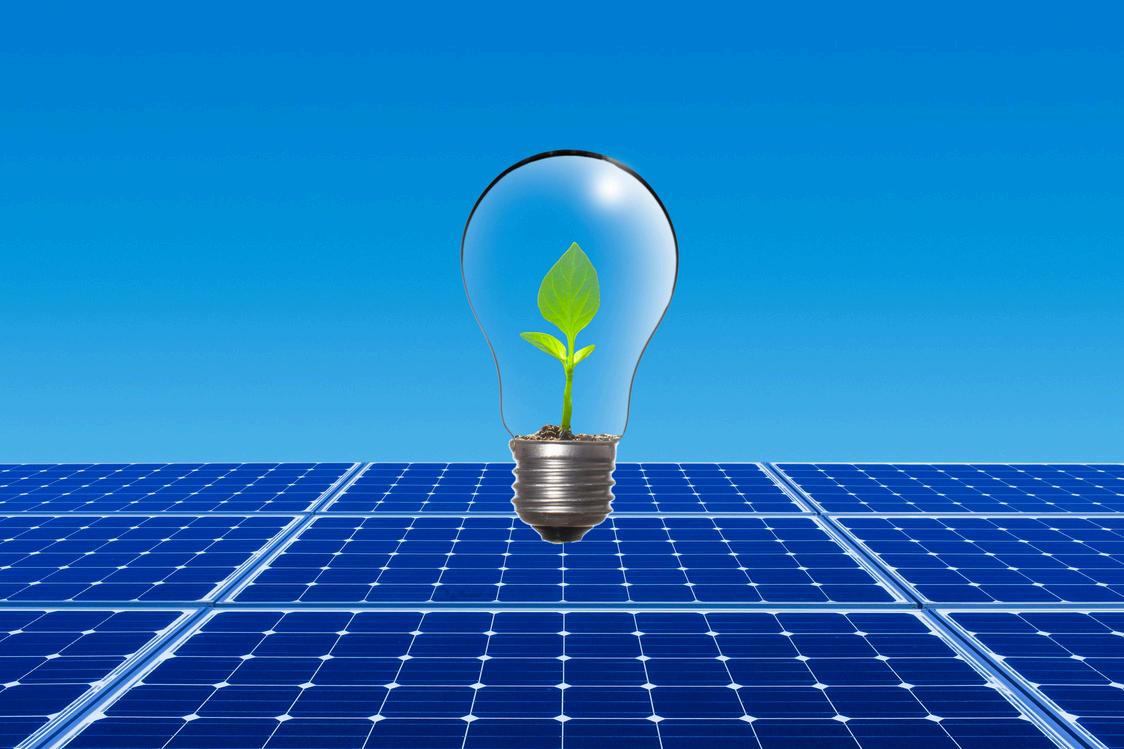
Furthermore, initiatives to promote distributed energy systems and time-of-day tariff structures are improving grid flexibility and encouraging consumer participation in the clean energy transition
Empowering States and Human Capital Development
While national policy sets the direction, state-level leadership ensures effective implementation. Many states are now aligning their renewable energy roadmaps with the national 2030 vision, supported by incentives for local generation and investments in solar parks
Parallelly, leadership focus on skill development and workforce training is building a foundation of technical expertise across the solar value chain Skill councils and training programs are preparing thousands of technicians, engineers, and project managers capable of sustaining India’s expanding solar ecosystem
By linking clean energy development with employment generation and regional growth, leadership is ensuring that the renewable energy transition delivers inclusive socioeconomic benefits

Conclusion
India’s march toward the 500 GW renewable energy target reflects how visionary leadership can turn policy intent into actionable progress. Through consistent focus on clarity, coordination, and capacity building, leaders have transformed the renewable landscape into one of the world’s fastest-growing clean energy markets
From setting long-term targets to ensuring near-term execution, leadership has guided every stage of the transformation, policy design, project implementation, financing, and human capital development As solar energy continues to anchor India’s energy future, the nation’s experience stands as a powerful example of how leadership, vision, and strategy can drive a sustainable and resilient transition to a cleaner tomorrow.

RESEARCH S T O R Y
Smart Manufacturing: How Indian Leaders Are Driving Automation In Solar PV Production
Smart manufacturing is becoming a cornerstone of India’s solar PV industry, as leaders increasingly adopt automation and robotics to enhance efficiency, reduce costs, and maintain global competitiveness The Indian solar sector, which is rapidly scaling to meet the country’s renewable energy targets, is under constant pressure to improve productivity and quality while reducing dependence on imports. With the government’s emphasis on domestic manufacturing through programs such as Production Linked Incentive (PLI) schemes and growing demand for solar installations, companies are turning toward smarter factories that integrate advanced technologies into their operations
Automation in solar PV production is not limited to assembly lines but spans across multiple stages, including wafer cutting, cell processing, module assembly, quality inspection, and packaging By introducing robotics in these stages, manufacturers are able to reduce human error, ensure precision, and improve consistency in production For instance, robotic arms are widely deployed in solar cell tabbing, stringing, and lamination processes, which require accuracy at micron levels The adoption of artificial intelligence and machine learning is also enabling predictive maintenance, defect detection, and real-time monitoring of plant operations. This not only boosts yield but also minimizes downtime, directly contributing to cost savings and better resource utilization.
Indian leaders in the solar PV space are increasingly recognizing that competitiveness depends on aligning with Industry 4 0 principles Companies are investing in smart equipment that integrates sensors, Internet of Things (IoT) platforms, and cloud-based data analytics Such integration allows seamless tracking of material flows, energy consumption, and production efficiency across facilities Several manufacturers are adopting digital twins of their factories to simulate production processes and identify bottlenecks before actual implementation, thereby improving scalability and operational agility
One of the main drivers behind this technological shift is the need to meet international quality standards. As Indian solar PV modules are increasingly exported to global markets,
manufacturers must ensure compliance with strict reliability and performance requirements Automated testing stations, vision-based quality control systems, and robotics-based material handling are helping companies achieve higher precision and uniformity This is also vital in building credibility with global buyers, ensuring that Indian products can compete against established players from other manufacturing hubs.
At the same time, workforce transformation is becoming a key focus area Smart manufacturing does not eliminate human involvement but shifts the role of workers from repetitive manual tasks to more skilled functions such as managing automated lines, analyzing production data, and troubleshooting high-tech equipment Indian companies are working closely with skill development councils and training institutions to build a talent pipeline that can operate and maintain robotics-enabled manufacturing facilities This focus on upskilling ensures that automation complements rather than displaces the workforce, aligning with India’s broader socio-economic goals
Policy support is playing a critical role in accelerating this trend With the government promoting domestic manufacturing of solar PV through financial incentives, import duties on certain components, and infrastructure support in solar parks, there is a growing incentive for companies to upgrade to smart production systems These measures are encouraging long-term investments in technology, ensuring that India is not only self-reliant but also an exporter of high-quality solar PV products.
As the solar PV industry matures, Indian leaders are proving that smart manufacturing is not just about technology adoption but also about building resilience and sustainability into the sector Automation and robotics are helping create future-ready factories that are more competitive, efficient, and aligned with India’s vision of becoming a global hub for renewable energy manufacturing This transformation reflects a decisive step toward shaping the next phase of the solar industry, where innovation and technology will drive both business growth and the nation’s clean energy ambitions

LIGHTING THE WAY
CultivatingLeadersforIndia’sSolarGrowth
Shaping Leaders Who Can Steer Through Change
Building Skills Beyond the Basics
Leveraging Mentorship as a Force Multiplier
Making Leadership Everyone’s Responsibility
Looking Ahead
COO OYSTERRENEWABLES
RESEARCH
Inverter Intelligence: Why Power Electronics Defines The Next Leap In Solar Efficiency
The Indian solar industry has entered a phase where efficiency and reliability are no longer optional but central to success As solar installations expand from rooftops to vast utility-scale projects, the role of power electronics, especially inverters, has become more critical than ever Inverters are not just a link between solar modules and the grid; they are the brains of a solar project, dictating how energy is harvested, managed, and delivered. With India targeting ambitious renewable energy capacity, the evolution of inverter intelligence is set to define the next leap in solar efficiency.
Inverters today are not limited to basic conversion of direct current into alternating current They are integrated with advanced control systems, digital platforms, and real-time monitoring tools that optimize the output of every panel Features like maximum power point tracking (MPPT) ensure that even under variable conditions such as shading, dust, or cloud cover, the system extracts the highest possible efficiency With the rise of bifacial modules, floating solar, and hybrid plants, this intelligence becomes even more important to stabilize output and balance generation with grid requirements
Grid integration is another area where inverter intelligence is transforming the sector. India’s grid is undergoing rapid modernization, but remains vulnerable to issues of intermittency and imbalance caused by large-scale renewable penetration. Smart inverters with reactive power management, voltage and frequency control, and fault ridethrough capabilities act as stabilizers, ensuring grid harmony while supporting renewable expansion This also reduces the burden on transmission infrastructure and allows smoother scaling of distributed energy resources
In the context of hybrid power plants that combine solar with storage or wind, intelligent inverters play a central role in coordinating multiple sources They allow seamless switching between solar power, battery support, or grid supply depending on demand and availability For developers and investors, this means higher plant utilization factors, predictable returns, and a more bankable project. For consumers, it translates into a steady power supply and reduced reliance on fossil fuel-based peaking plants.

Digitalization further extends the leadership role of inverters Remote monitoring platforms connected to inverters provide operators with predictive insights using artificial intelligence and machine learning These insights help in forecasting performance, identifying potential failures before they occur, and optimizing maintenance schedules The shift from reactive to predictive maintenance reduces downtime, lowers operating costs, and ensures long-term plant performance. In India, where projects are spread across diverse geographies with different environmental challenges, this layer of intelligence becomes a strong competitive advantage.
As module efficiencies plateau, much of the next leap in solar performance will come from smarter power electronics Indian manufacturers and global leaders are already investing in localized R&D to tailor inverter solutions to India’s specific grid codes, climatic conditions, and cost-sensitive markets The push for domestic manufacturing under schemes like Production Linked Incentives also emphasizes inverters, recognizing their strategic role in the energy ecosystem
The leadership of power electronics will not only define how efficiently India harnesses solar power but also how resilient and intelligent its energy future becomes Inverter intelligence is no longer a supporting feature it is the foundation of solar efficiency and the key to unlocking the next stage of India’s renewable journey.

RESEARCH
S T O R Y
Leadership In Innovation: How Advanced Cell Technologies (Topcon, HJT, Perovskite) Are Shaping India’s Solar Future
India’s solar industry is entering a new phase of technological evolution as advanced cell technologies are beginning to define the pace and scale of growth While conventional mono PERC modules have powered the rapid expansion of solar in the last decade, the limitations in efficiency are now pushing the industry toward more advanced solutions such as TOPCon, heterojunction (HJT), and perovskite solar cells. These technologies are not just incremental upgrades but represent a leap in performance that will determine how India meets its renewable energy targets.
TOPCon, or Tunnel Oxide Passivated Contact technology, has already started gaining momentum in India’s manufacturing ecosystem With efficiency levels crossing 24 percent in commercial production, TOPCon offers a clear path for manufacturers looking to upgrade from PERC without massive disruptions in infrastructure Several Indian players have already announced plans to establish large-scale TOPCon lines under the government’s Production-Linked Incentive (PLI) scheme The advantage lies in its compatibility with existing PERC production lines, making it a cost-effective step toward higher efficiency modules As the demand for rooftop and utility-scale projects grows, TOPCon is becoming the natural choice for domestic manufacturers seeking global competitiveness.

Heterojunction technology, or HJT, is also gaining attention, though it comes with higher capital investment requirements. HJT combines crystalline silicon with thin-film layers, delivering efficiencies beyond 25 percent and offering excellent temperature coefficients, which is particularly important for India’s hot climate zones The performance advantage in terms of lower degradation rates and bifacial design makes HJT modules attractive for high-performance solar plants Indian companies exploring HJT are betting on its long-term value, even if the initial costs are steep Over time, as equipment prices decline and manufacturing expertise grows, HJT could become a dominant technology in premium solar projects
Perovskite solar cells represent the frontier of solar research and promise to revolutionize module production with their potential to achieve efficiencies above 30 percent. While still

at the laboratory and pilot stage, perovskites have captured significant global interest due to their low material cost, ease of processing, and compatibility in tandem structures with silicon For India, the adoption of perovskite technology could align well with its research-driven initiatives and growing ecosystem of start-ups in clean energy. The challenge lies in scaling production while addressing stability and durability issues. If these are overcome, India could play a pioneering role in commercializing perovskite-based solar technologies, giving it an edge in global supply chains.
The leadership in innovation for India’s solar sector will depend on how well the industry balances short-term adoption with long-term research TOPCon offers an immediate solution for scaling efficiency, HJT provides a premium option for performance-driven installations, and perovskite represents the future of ultra-high efficiency at low cost Together, these technologies can reshape India’s solar journey, helping it achieve ambitious targets of 500 GW renewable energy capacity by 2030 The path forward will require not only investment in manufacturing but also strong support for R&D, technology partnerships, and policy frameworks that encourage innovation. India’s ability to lead in advanced solar cell technologies will ultimately define its role in the global clean energy transition.
MARKET TRENDS
SolarLeasingandSharedSolarModelsontheRise
Regional Momentum
Breaking Down the Cost Barrier
Power Purchase Agreements and Shared Solar Models
Investment and Growth Outlook
Commercial and Industrial Adoption
Conclusion
SHREYASGOWDA SENIORVPSALES &OPERATIONS
OORJANCLEANTECH
RESEARCH
S T O R Y
AI, Digital Twins, And Smart Grids: How Technology Leadership Is Reshaping Renewable Business Models
The renewable energy sector is no longer just about generating clean power; it is increasingly about how technology transforms business strategies, operational efficiency, and long-term competitiveness Emerging tools such as Artificial Intelligence (AI), digital twins, and smart grids are reshaping how companies design, manage, and monetize renewable projects. For business leaders, adopting these technologies is becoming a strategic imperative rather than a futuristic choice.
AI has become a powerful enabler of predictive intelligence in renewables From forecasting solar and wind generation with higher accuracy to optimizing battery storage dispatch, AI helps businesses manage intermittency more effectively Energy producers are now moving away from static generation models to dynamic, data-driven strategies that balance supply and demand in real time This reduces curtailment, enhances profitability, and improves grid integration AI-enabled solutions also cut down on operational costs by predicting equipment failures and reducing downtime The combination of cost optimization and better asset reliability allows renewable companies to offer more competitive pricing in power purchase agreements
Digital twins are another game-changer in renewable business models. By creating virtual replicas of solar farms, wind turbines, or even entire grid systems, companies can simulate performance, detect inefficiencies, and plan upgrades without physical trials These models allow executives to make
investment decisions with greater confidence, as risks can be analyzed in a controlled environment before capital is deployed Moreover, digital twins foster cross-functional collaboration, enabling engineers, financiers, and operators to work on the same virtual model This integration not only improves efficiency but also shortens project development cycles. For leaders, digital twins provide a critical link between technical operations and strategic financial planning.
Smart grids represent the backbone of future-ready renewable business models Traditional grids were designed for one-way electricity flows, but the rise of distributed generation requires a system that is flexible, intelligent, and adaptive Smart grids leverage sensors, IoT devices, and advanced data analytics to manage two-way flows between utilities and consumers This means renewable companies can participate in new revenue streams such as peer-to-peer energy trading, demand response programs, and dynamic pricing models For consumers, smart grids provide transparency and control, making clean energy not only sustainable but also more participatory Business leaders are realizing that the smart grid is not just infrastructure but a platform for innovation and new market opportunities.
What ties AI, digital twins, and smart grids together is leadership. Technology by itself does not create transformation; it is the vision of leaders who align digital tools with long-term strategies that brings real change at actively invest in digitalization are not only rgins but are also setting new industry ey are moving beyond traditional revenue solely on generation to integrated approaches technology services, data-driven insights, and gement


energy enters its next growth phase, leadership adoption will define winners and laggards els will continue to evolve around digital eating an ecosystem where clean energy is eliable, and financially sustainable. For leaders le sector, embracing AI, digital twins, and smart nger optional it is the foundation of future ss.
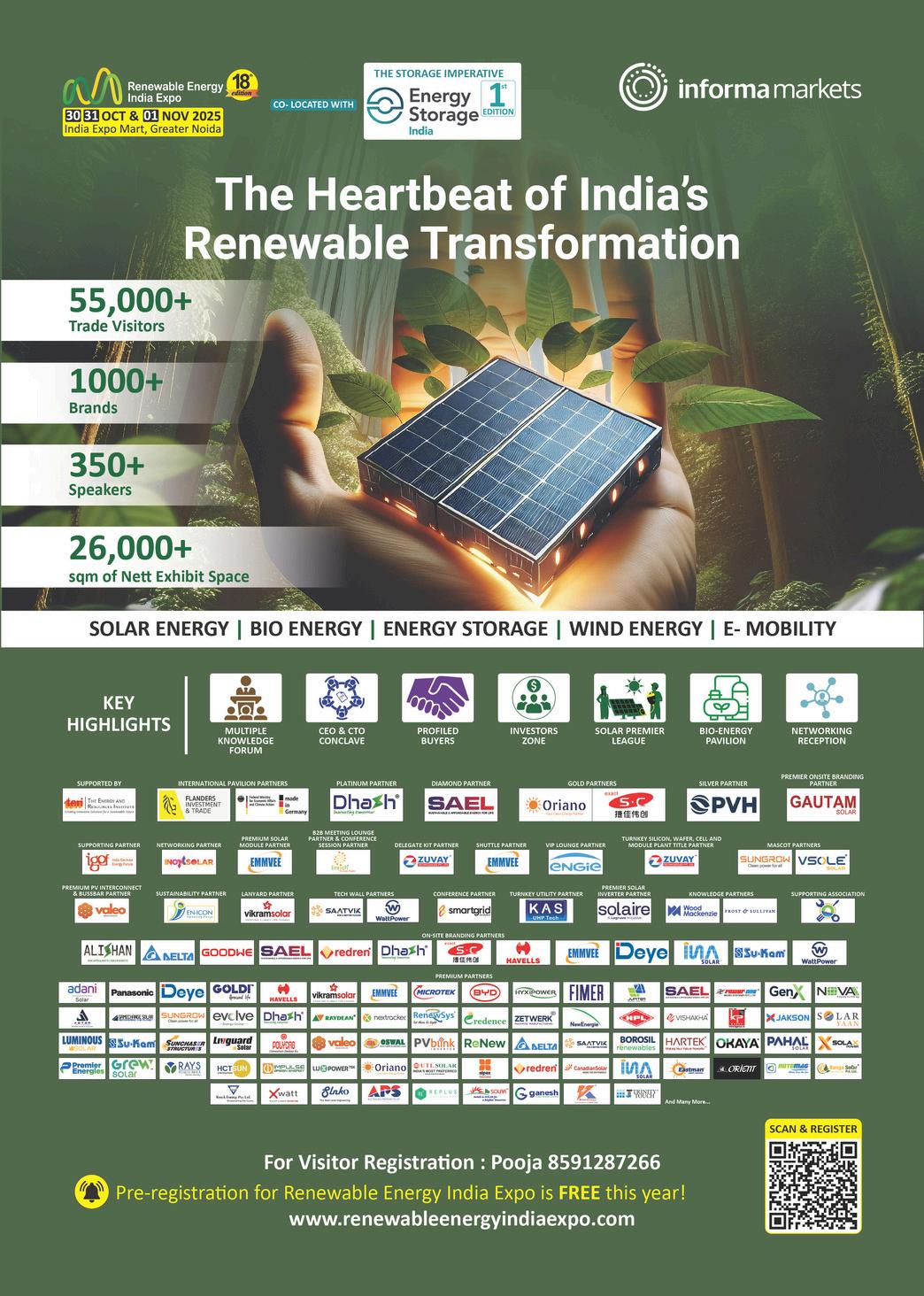

UTILITY-SCALESOLARv.DISTRIBUTEDSOLARININDIA:
WHERE SHOULD LEADERS FOCUS?
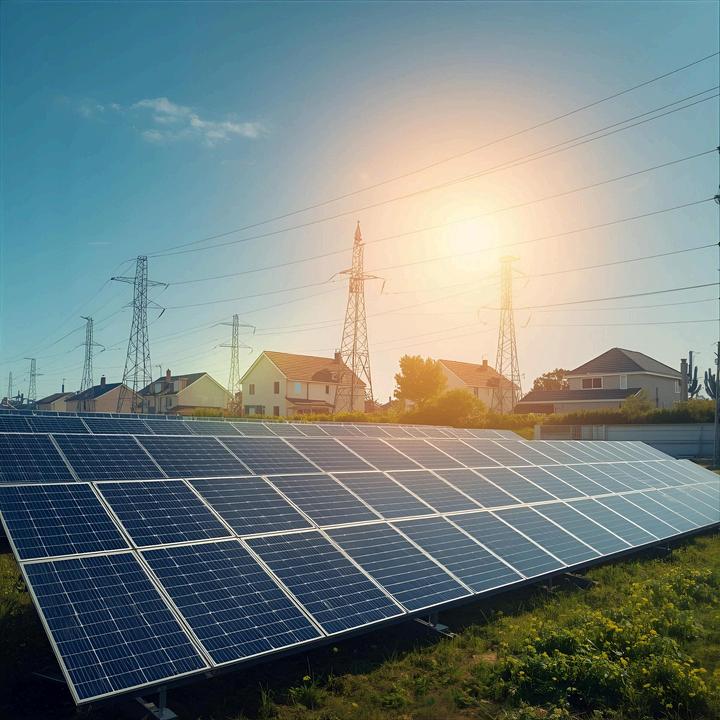
PALLAVI
PARTNER,PHOENIXLEGAL
TECH INSIGHTS

TechnicalProgressandApplication
StatusofStringInverters
Introduction
As countries worldwide accelerate their push toward “dualcarbon” goals, photovoltaics (PV) are taking center stage in the global energy transition In 2024 alone, around 530 GW of new PV capacity was added worldwide, with China contributing 277.6 GW a 28 3% year-on-year increase
At the heart of every PV system lies the inverter, the device that converts solar power into usable electricity. Inverters are generally divided into two categories: centralized and string Over the past decade, string inverters have emerged as the mainstream choice, offering flexibility, adaptability, and strong potential to reduce both upfront investment and the levelized cost of energy (LCOE) By 2024, string inverters accounted for roughly 80% of global shipments, far ahead of centralized units at just 20%
As deployment expands across residential rooftops, commercial and industrial systems, and large-scale ground plants, string inverters are evolving at an unprecedented pace This article reviews the key technology trends and application developments shaping the market as we move into 2025
The Core Driver: Lower Costs, Higher Efficiency
The demand for cheaper, more efficient PV systems continues to push string inverter technology forward Three trends stand out:
High Voltage and High Power
Mainstream string inverters have transitioned from 1,100 V to 1,500 V DC input platforms, cutting current, raising conversion efficiency, and reducing costs The next step is 2,000 V and beyond. Some manufacturers are already rolling out solutions in the 2,000 V / 400 kW+ range, driving down balance-of-system (BOS) costs even further.

Alongside voltage gains, power density is rising By 2030, large-scale string inverters are expected to reach 365 kW per unit, with power density climbing from around 2 76 kW/kg in 2024 to over 3.5 kW/kg. That means more power output at lower manufacturing cost
High DC/AC Overload Ratios
Pushing DC input power higher than the inverter’s rated AC power the “overload ratio” allows systems to maximize annual output and cut LCOE Mainstream models now exceed 130%, while leading solutions hit 160% or more, thanks to wide MPPT voltage ranges and intelligent dynamic derating that adjusts output in real time
Topology Innovation
To handle higher voltages and boost efficiency, three-level topologies (such as NPC and ANPC) have become standard in high-power inverters At 2,000 V and beyond, research is moving into five-level and multi-level designs, further improving waveform quality, reducing stress on devices, and lowering losses
Reliability as the Lifeline
PV plants operate in tough, variable conditions which means inverter reliability is non-negotiable Advances are focusing on safety, protection, and predictive maintenance
DC Arc Fault Detection and Interruption (AFCI)
Arc faults are a major fire risk The latest string inverters use advanced sensors and AI-driven algorithms to achieve nearperfect detection rates and extinguish arcs in under 500 ms Challenges remain in long-cable and high-current scenarios, but detection accuracy is improving rapidly.
Structural Safety and Explosion-Proof Design
Outdoor inverters typically achieve IP65 or higher protection. To address risks from internal faults, new designs combine reinforced enclosures with intelligent pressure relief such as predefined rupture paths and venting channels to safely release pressure without sacrificing sealing
Intelligent Monitoring and Predictive Maintenance
Instead of reacting after faults, inverters are shifting to predictive models Using precise insulation monitoring, temperature sensing, and capacitor health checks, combined with edge/cloud AI algorithms, operators can identify risks early and carry out preventive maintenance.
Value Expansion: Control and Smart O&M
As renewable penetration rises, inverters are becoming active participants in grid stability and plant operation
Grid-Forming Capability
Advanced control strategies such as Virtual Synchronous Generator (VSG), droop control, and Virtual Oscillator Control (VOC) allow string inverters to provide inertia and damping in weak grids Some 320 kW+ units can now operate stably at SCR ≥ 1.1 and even deliver black-start capability. The next frontier is fault ride-through and interoperability across different strategies
Power Quality and Harmonic Suppression
Using fast DSPs, optimized modulation, and active filtering, modern string inverters can keep total harmonic distortion (THDi) below 3%, even under complex grid conditions
AI-Driven O&M
AI is transforming operations: minute-level forecasting, secondlevel IV curve scans, and AI-based fault recognition all help operators run plants more efficiently The challenge now is integrating diverse data sources from weather and grid data to module imagery into actionable insights
Industry Foundations: Semiconductors and Localization
Performance gains depend on breakthroughs in core components and in supply chain security
Silicon Carbide (SiC)
SiC MOSFETs boost efficiency above 99%, increase power density, and reduce cooling needs High costs limit use to premium models today, but rapid capacity growth and cost reductions will drive broader adoption
Gallium Nitride (GaN)
GaN is already used in microinverters and auxiliary circuits, with engineering trials underway in higher-power applications As costs drop and voltage handling improves, GaN will play a bigger role.


Localization
China is rapidly closing the gap in IGBTs, SiC modules, and control chips By 2024, localization rates hit nearly 40% for 1,500 V string inverter power modules Domestic MCUs are also gaining traction in mid- and low-power products Localization strengthens supply chain resilience and cost competitiveness
Conclusion
The string inverter industry is in a period of accelerated innovation High-voltage platforms, advanced control strategies, predictive O&M, next-generation semiconductors, and localized supply chains are converging to deliver higher efficiency, lower costs, and greater reliability.
Looking ahead, string inverters will not only consolidate their dominance over centralized designs but also become central to new scenarios: commercial rooftops, residential PV, and PV-plusstorage systems. With their evolving intelligence and gridsupport capabilities, string inverters are moving from passive power converters to active energy managers.
For Ginlong (Solis) Technologies and other Chinese manufacturers at the forefront of these developments, the opportunity is clear: lead in technology, scale globally, and make a lasting contribution to the world’s clean energy transition and the achievement of dual-carbon goals

DR.ZHANG CHIEFEXPERT GINLONG(SOLIS)TECHNOLOGIES
PROJECT FEATURE

FIMERPowersNicaragua’sRenewable GrowthwiththeSANISIDROSolarProject
Reinforcing global leadership through advanced modular inverter solutions
FIMER, a global pioneer in solar inverter technology, continues to strengthen its global footprint with the successful completion of the SAN ISIDRO Project in Nicaragua Commissioned by Nordic Solar S A and successfully completed in July 2025, this milestone installation stands as a testament to FIMER’s engineering excellence and unwavering commitment to advancing clean energy solutions worldwide
Project Overview
The SAN ISIDRO Project represents a significant step forward in Nicaragua’s renewable energy landscape Its goal was to establish a modular, skid-based power conversion infrastructure designed to efficiently channel solar-generated electricity into the medium-voltage grid Through this initiative, FIMER has delivered a robust, scalable, and easy-to-maintain system that enhances grid reliability while supporting the nation’s sustainability ambitions
At the core of this achievement lies FIMER’s PVS980-CS Compact Skid solution an advanced, plug-and-play power conversion system integrating inverter, transformer, and MV switchgear into a single, preengineered unit. The installation features four skids, each rated at 4,782 kVA, for a total installed capacity of 19.128 MVA. Built to endure challenging environments, the system operates effectively from -20°C to +50°C and offers IP54/IP55-rated protection, ensuring exceptional performance in Central America’s tropical climate
Engineering and Execution Excellence
The project’s implementation followed a structured five-phase plan encompassing site preparation, precision equipment installation, DC/AC/MV interconnections, rigorous testing, and final grid synchronization in July 2025 FIMER’s meticulous planning and seamless coordination ensured timely delivery and flawless execution.
Key challenges such as logistics, environmental protection, and grid harmonics control were successfully mitigated through specialized engineering practices and close collaboration with local stakeholders
The modular, factory-tested skid design played a pivotal role in minimizing installation time and ensuring long-term serviceability, underlining FIMER’s expertise in delivering dependable, highperformance systems
Distinctive Features
The SAN ISIDRO project showcases several standout advantages of FIMER’s technology:

Plug-and-play modular skid design for faster commissioning
Optimized thermal and sealing systems suited for tropical climates.
Scalable configuration enabling future capacity expansion
Pre-assembled, factory-tested systems ensuring reliability and quality
Alignment with Nicaragua’s national renewable energy vision, advancing clean power accessibility
With a total installed capacity of 19.128 MVA, the SAN ISIDRO project further reinforces FIMER’s position as a trusted partner in utility-scale renewable energy development It also exemplifies how innovation, modularity, and sustainability can converge to empower nations on their clean energy journey.
ABOUT FIMER
FIMER is a global leader in solar inverter technology, shaping the future of renewable energy with one of the most comprehensive portfolios of solar and storage systems for every application For FIMER, investing in solar energy is not just a business decision it represents a strategic commitment to building a cleaner and more sustainable world for future generations
The company is dedicated to delivering clean, affordable, and reliable energy solutions that empower people, uplift communities, and protect the planet
FIMER in India
Since 2010, FIMER India has been at the forefront of the country’s inverter manufacturing sector Headquartered in Bengaluru, Karnataka, the facility has an annual manufacturing capacity exceeding 15 GW, positioning FIMER as one of the most versatile, experienced, and trusted inverter suppliers in the Indian market
FIMER's Impact
75+ GW of installed capacity worldwide
54,000+ EV chargers deployed globally
Two manufacturing hubs in Italy and India
FIMER is a brand owned by MA Solar Italy, part of the McLaren Applied Group, and remains one of the world’s leading renewable energy manufacturers. With state-of-the-art production facilities and dedicated local training centers, FIMER continues to strengthen its global presence staying close to its customers and partners in the ever-evolving energy sector
PROJECT FEATURE

HuasunDrivesDesert-to-Green TransformationwithHigh-Efficiency HJTSolarinWesternChina
Western China’s arid deserts, long defined by drifting sand and fragile ecosystems, are becoming hubs of renewable power thanks to largescale photovoltaic (PV) development. Capitalizing on more than 3,000 annual sunshine hours and China’s national “dual-carbon” strategy, Huasun is helping turn barren lands into clean-energy oases while advancing desertification control
Policy Momentum
China plans to add 253 GW of solar capacity across its desert, Gobi, and semi-desert regions by 2030, while restoring over 10 million mu (≈670,000 ha) of degraded land This unprecedented build-out positions desert PV as a cornerstone of the country’s energy transition and ecological restoration efforts
Flagship Projects
A landmark example is the 4 GW Ruoqiang solar project on the edge of the Taklamakan Desert, which began grid-connected operation in August 2025 currently China’s largest single-site desert PV plant. Using a “generate above, restore below” model, the project’s over 3866 ha of solar arrays lower ground temperatures by 3–5 °C, cut evaporation, raise soil moisture up to 60%, and significantly improve vegetation survival rates, effectively curbing local desertification.
Huasun has supplied heterojunction (HJT) modules for this and other key initiatives, including projects in Bayannur, the southern Kubuqi Desert, Urumqi’s Midong District, and multiple long-term performance test sites across Northwest China
Technology Built for Extreme Conditions
Huasun’s HJT modules deliver industry-leading efficiency, bifaciality, and reliability critical for desert environments with surface temperatures reaching 70 °C Key features include:
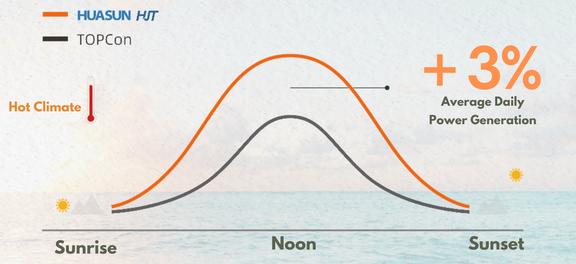



Outstanding temperature coefficient of –0 24%/°C, ensuring stable output in high heat.
Ultra-high bifacial factor, leveraging sand reflectivity for greater energy yield.
Superior low-light response, maintaining performance during dawn, dusk, and sandstorm conditions
Proven long-term durability, as demonstrated by year-long field data showing higher and more stable output than conventional P-type and standard N-type modules
By integrating advanced PV technology with ecological restoration, Huasun is transforming solar arrays into ecological infrastructure The company’s high-efficiency HJT solutions not only maximize plant performance and economic returns but also demonstrate how renewable energy can drive land rehabilitation.
“Huasun is proud to contribute to a scalable ‘China model’ for combating desertification while accelerating the global shift to renewable power,” said Jimmy Xu, Chairman of Huasun
PRODUCT LAUNCH

SolaXPowerLaunches350kWUtilityScaleSolarInverterinIndia
SolaX Power, a global leader in solar inverter and energy storage solutions, has officially launched its next-generation 350 kW UtilityScale Solar Inverter for the Indian market. To mark this milestone, SolaX Power has hosted a series of exclusive events in recent months to introduce the product and provide hands-on experience to partners, EPCs, and key industry stakeholders
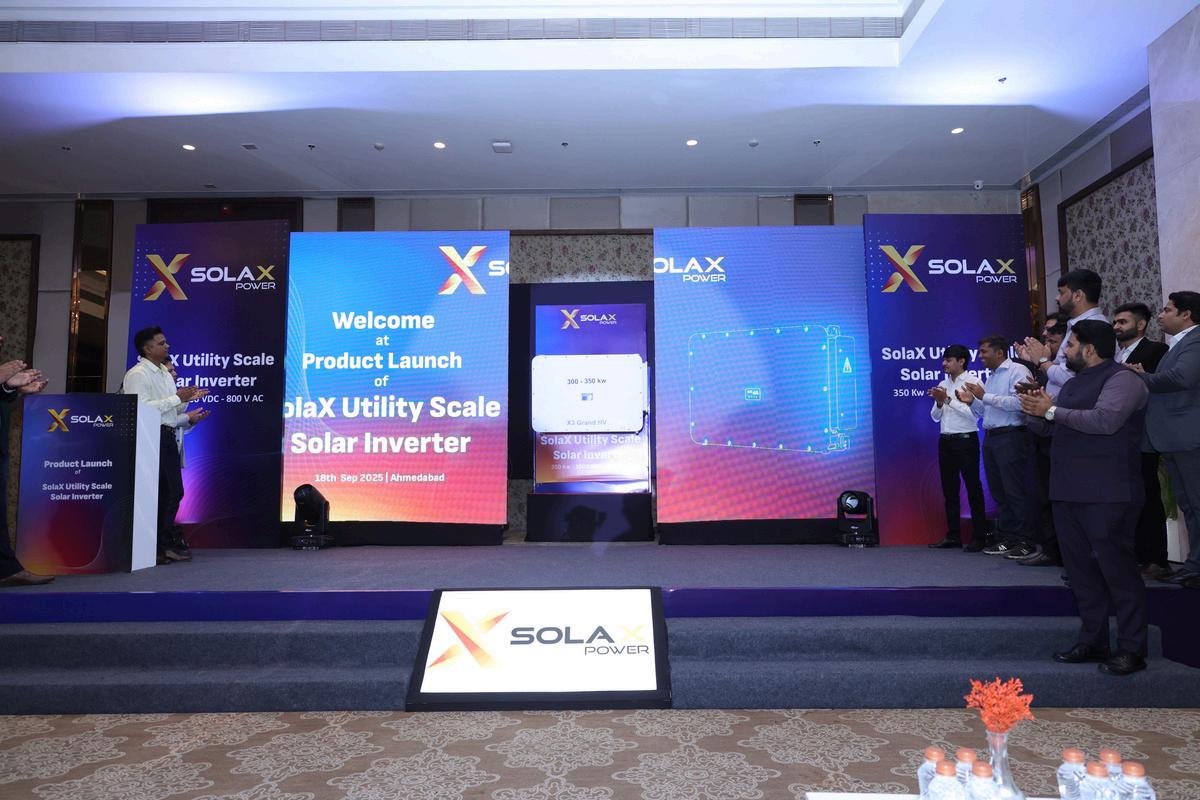
Powering India’s Renewable Growth
India is witnessing rapid expansion in renewable energy capacity, driven by ambitious government targets and growing demand for sustainable solutions. The new 350 kW inverter is specifically designed to cater to India’s utility-scale solar projects It offers superior efficiency, robust reliability, and advanced grid management features, helping developers optimize performance while reducing lifecycle costs
Key highlights of the new inverter include:
Efficiency exceeding 99% to maximize energy generation Higher Output at 50Deg C
Advanced cooling systems for consistent operation in India’s diverse climates.
Smart monitoring and remote O&M features for simplified asset management
Compliance with national grid standards and enabled with latest features i.e. LVRT, HVRT , Night Time SVG and PID recovery and many more
Recent Launch Events
As part of the launch campaign, SolaX Power organized a series of regional events across India. These events not only introduced the 350 kW inverter but also allowed participants to gain hands-on experience, interact with technical experts, and explore practical applications for their projects The gatherings drew strong participation from distributors, EPCs, and industry leaders, reflecting the market’s enthusiasm for the new solution.

Highlights of the events include:
12th September 2025 – Coimbatore 18th September 2025 – Ahmedabad
Commitment to India’s Solar Mission
Speaking on the launch, Mr Vipin Bhardwaj, Country Manager – India, SolaX Power, said:
“The 350 kW Utility-Scale Inverter represents a significant step in our India journey It is engineered to support the country’s evolving solar landscape with unmatched efficiency, reliability, and intelligent functionality By conducting these launch events, we have ensured that our partners and EPCs get direct hands-on experience of the product, enabling them to better serve the market and accelerate India’s renewable energy growth ”
About SolaX Power
SolaX Power is a globally recognized leader in solar inverters, hybrid solutions, and energy storage systems, with a presence in more than 100 countries The company’s mission is to empower a sustainable future through continuous innovation, high-quality solutions, and strong customer partnerships
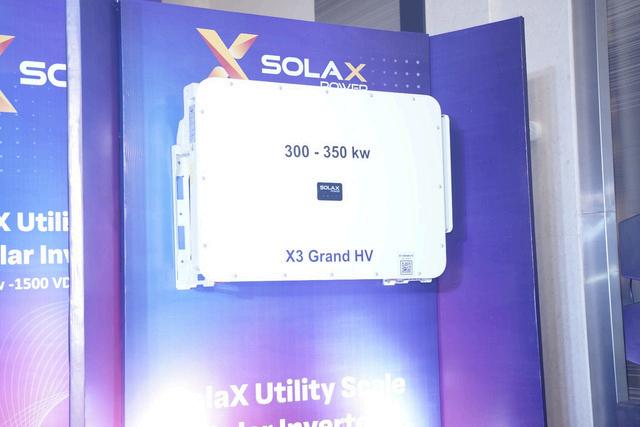
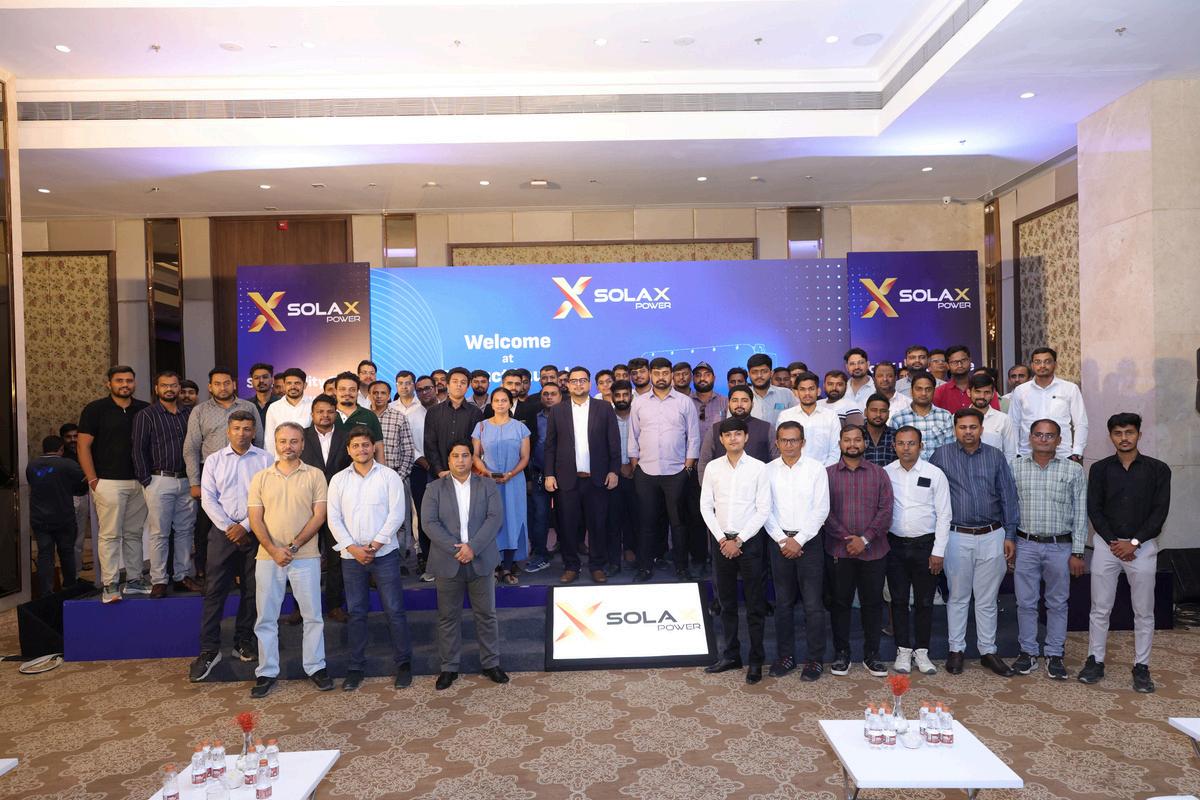
PRODUCT FEATURE

AlishanisleadingIndia’ssolarrevolution withNextGenerationMaterials
India’s solar journey has become a national mission, with over 280 GW of solar targeted by 2030 out of 500 GW renewables The recent GST cut on modules has boosted affordability and adoption, with India already adding 40 GW each year. But longterm reliability depends not just on cells, but on encapsulants and backsheets that protect them for decades.
Alishan Green Energy has stepped up to meet this need. From 800 MW in its early days, the company has expanded to 4 2 GW of encapsulant capacity and is now moving towards 6 6 GW by December 2025, supported by 3 GW of backsheet production This scale has made Alishan India’s largest independent manufacturer of encapsulants and backsheets
latest product designed for next-gen cell technologies
At Alishan, progress is defined by innovation This year, we have introduced products tailored to the fast-changing demands of the solar industry
Alishan Low Acid EVA reduces acetic acid content, protecting modules from corrosion and extending their lifespan, especially in hot and humid regions
Alishan EPE NT supports advanced N-type technologies like TOPCon, HJT, and bifacial modules Its EVA/POE blend ensures higher transparency, stronger adhesion, and longlife performance
Alishan EPE DC goes beyond protection by converting harmful UV light into usable energy This prevents yellowing and power loss while also boosting module efficiency in low-light conditions
All products are rigorously tested in our NABL-accredited labs and certified to IEC and UL standards, ensuring our customers that they can rely on world-class quality.
Made in India, strength for a global vision
India’s solar industry has long depended on imported raw materials, creating supply risks and higher costs Alishan Green Energy is changing that by localizing advanced encapsulant and backsheet production By delivering faster, more reliable supply from within India, we are giving module makers the confidence to scale quickly in domestic as well as global markets
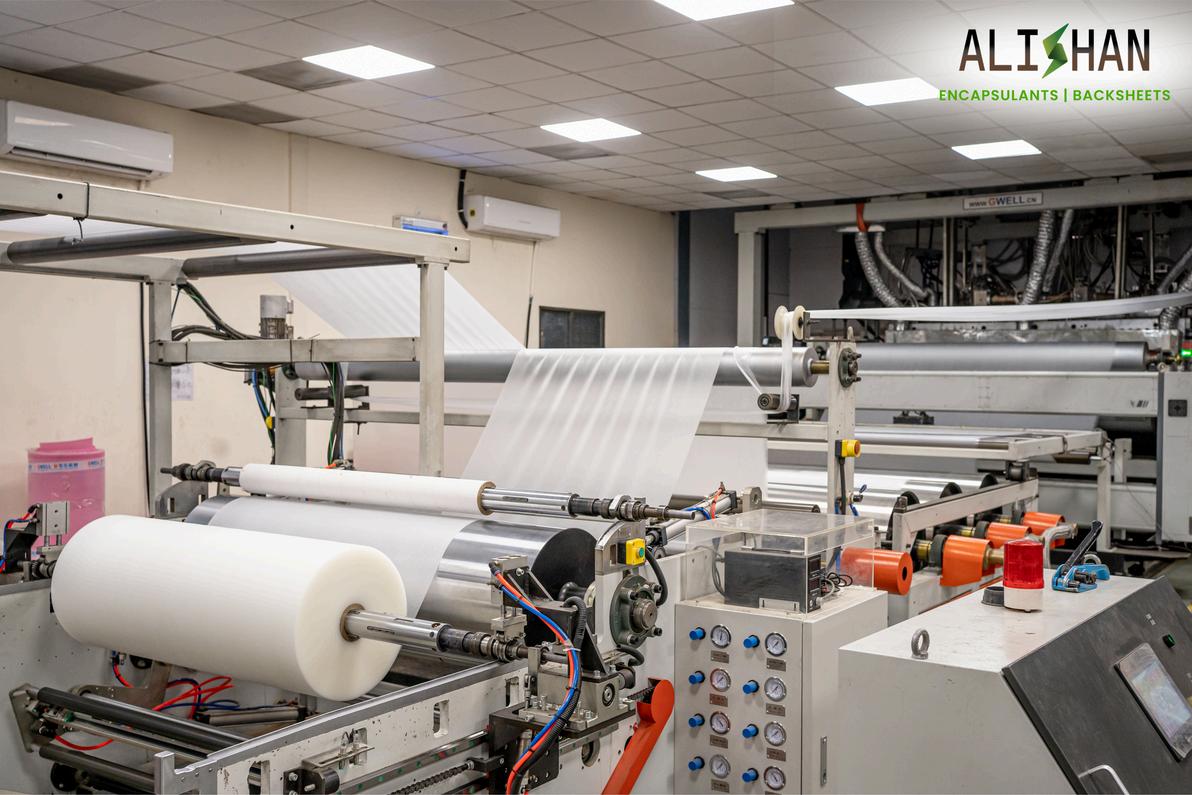
The road to 10 GW and beyond
Backed by quality, scale, and innovation, Alishan is preparing for its next leap with the expansion to 6 6 GW of encapsulant capacity by December 2025 Our vision for the long term is to cross 10 GW and keep developing new materials for future solar cell technologies
At Alishan Green Energy, our purpose goes beyond numbers We want to be a complete solution for solar ancillary materials Today we are already a one-stop partner for encapsulants and backsheets We are not here to compete with our customers but to serve them and strengthen India’s solar foundation By building reliability at the core, we are working to make India truly self-reliant in the solar sector.



SUCCESS STORY

ReNewStrengthensAatma-NirbharBharat withPioneeringSolarManufacturing
ReNew, India’s leading decarbonisation solutions provider, has marked a major milestone in its clean energy journey with the commissioning of two world-class solar module manufacturing plants and an advanced solar cell facility These developments not only reinforce the company’s commitment to Atmanirbhar Bharat but also strengthen its position as a global sustainability leader driving the energy transition
Expanding Capacity, Strengthening Supply Chains
ReNew’s strategic entry into solar manufacturing in 2021 was a natural progression of its mission to accelerate India’s energy transition. In just a few years, the company has built one of the largest solar manufacturing footprints in the country The commissioning of its 4 GW solar module plant in Jaipur, Rajasthan (2023), and the integrated 2 4 GW module plus 2.5 GW cell facility in Dholera, Gujarat (2024), has taken its operational capacity to 6 4 GW of modules and 2 5 GW of cells This scale not only positions ReNew as a key contributor to India’s renewable energy ambitions but also helps in creating a robust domestic supply chain, reducing import dependency
Technology-Driven Manufacturing Excellence
The Jaipur facility, spread across 22 acres, was one of the first commissioned under the Government of India’s Production Linked Incentive (PLI) scheme for solar manufacturing With a daily output of approximately 15,000 modules and over 1,400 direct jobs created, it is setting benchmarks in efficiency, scale, and employment generation
The Dholera plant, situated in Gujarat’s Special Investment Region, is even more ambitious in scope. Spread across 55 acres, it integrates both module and cell production under one roof Equipped with automated packing lines, AI-driven defect diagnostics, and advanced material handling systems, it stands out as one of India’s most technologically advanced solar manufacturing facilities. Together, these plants highlight ReNew’s focus on operational excellence and innovation-led growth
Performance, Profitability, and Market Momentum
Since stabilization in Q2 FY26, the plants have consistently delivered at scale, with module production exceeding 12 MW/day and cell production over 5 MW/day In Q1 FY26 alone, ReNew produced more than 900 MW of modules and 400 MW of cells, with cell efficiencies averaging above 23.3%. The company also reported strong financial results INR 13 1 billion in revenue and INR 5 3 billion in adjusted EBITDA driven by cost efficiencies and third-party sales

ReNew’s external order book currently stands at 800 MW, alongside 1 9 GW already delivered, reflecting strong market confidence in its manufacturing capabilities
Future-Ready with TOPCon Technology
Looking ahead, ReNew is deepening its backward integration with the development of a 4 GW TOPCon solar cell facility Supported by a $100 million investment from British International Investment (BII), this project is progressing rapidly with land secured, civil works underway, and major machinery orders finalized Production is expected to commence by the end of FY27, further cementing ReNew’s leadership in advanced solar technologies
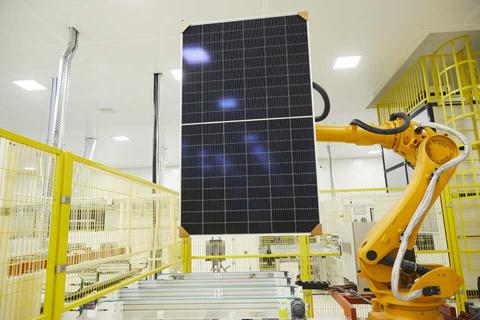
A Global Decarbonisation Leader
With its expanding manufacturing capacity, focus on innovation, and strong financial foundation, ReNew is playing a pivotal role in shaping India’s clean energy ecosystem Its strategic investments not only advance India’s self-reliance in solar manufacturing but also enhance its competitiveness on the global stage.
Through scale, technology, and vision, ReNew is powering India’s journey toward energy independence and strengthening its position as a global decarbonisation solutions provider.

PRODUCT LAUNCH

AeremLaunchesAll-in-OneSolarKits fortheEPCMarket
As India’s renewable energy sector accelerates, the need for reliable, pre-engineered, and high-quality solar solutions has become more crucial than ever Aerem Sunstore India’s leading B2B solar procurement platform, has taken a major step forward with the launch of its Solar Kits for the EPC market designed to simplify procurement, ensure quality, and drive faster solar adoption across the country.
A Trusted Name in Solar Procurement
Aerem Sunstore part of the Aerem’s ecosystem, has established itself as a one-stop platform for EPCs, developers, and installers looking for efficient solar procurement solutions The platform provides modules, inverters, batteries, structures, cables, and other essential BOS components from verified brands at competitive prices.
With a strong presence across major Indian cities, Aerem Sunstore continues to empower solar professionals through trusted partnerships, easy access to high-quality materials, and a seamless procurement experience all backed by strong technical and sales support.
Introducing Pre-Configured DCR Solar Kits
To further streamline project execution, Aerem Sunstore has launched its range of DCR (Domestic Content Requirement) Solar Kits an all-inone solution that simplifies the procurement process for EPC players.
These kits are available in 2.2 kW, 3.3 kW, 5.5 kW, and 10 kW variants, featuring top-tier brands such as Waaree, Renew, Emmvee, Growatt, and Polycab. Each kit includes every essential component from high-efficiency bifacial DCR solar modules and on-grid inverters to DCDBs, ACDBs, MC4 connectors, lightning arrestors, and earthing systems
Built with quality-approved components, Aerem Sunstore's solar kits deliver long-term performance, easy installation, and significant time savings by consolidating the entire Bill of Materials (BOM) into one ready-to-install package
Key Advantages for EPCs and Installers
All-in-One Solution: Complete kits reduce coordination and sourcing complexity
Quality Assurance: Components from reputed brands ensure durability and compliance.
In-House Engineering Support: Design and mounting guidance available from SunStore experts
Exclusive Financing: Up to 100% financing with competitive interest rates.
Dedicated Sales & Customer Support: On-ground assistance from SunStore’s experienced team Empowering
By introducing pre-engineered solar kits, Aerem Sunstore aims to redefine efficiency for EPC players, allowing them to focus on project execution rather than procurement challenges With trusted partnerships, financial flexibility, and engineering support, Aerem Sunstore is not only simplifying solar deployment but also accelerating India’s journey toward a sustainable, self-reliant energy future


COMPANY FEATURE

PVblink:PoweringIndia'sSolarFuture
PVblink Technology Pvt Ltd , a Gujarat-based Make-in-India manufacturer, is redefining the standards of solar inverter innovation for residential, commercial, and industrial applications With a commitment to reliability, efficiency, and digital intelligence, PVblink delivers advanced solar power solutions designed to address India’s growing renewable energy needs The company’s comprehensive product portfolio includes On-Grid, Off-Grid, Smart Switch, All-in-One inverter series and BESS offering superior performance and adaptability for every energy environment.
At the heart of PVblink’s success lies its dedicated in-house R&D team that continuously works on performance optimization, design enhancement, and cost-efficiency Every inverter is built to perform efficiently even in low-light conditions with ultra-low start-up voltage (30–40V), higher PV overloading capacity (up to 50%), and strong MPPT current handling (up to 18A per string)
PVblink’s Make-in-India manufacturing ecosystem ensures end-toend control from design to delivery maintaining high quality under strict ISO, BIS, and IEC certifications With a strong supply chain network and on-time logistics support, the company ensures seamless delivery even during high demand periods across India
Product Portfolio
On-Grid Inverters: Designed for efficient power generation with low-voltage start-up and enhanced safety, ensuring maximum ROI for installers and EPCs
Off-Grid Inverters: Delivering uninterrupted performance with powerful battery backup and fast switchover ideal for remote and rural areas
Battery Systems: Our batteries feature an indigenously developed BMS, fully designed and made in India - unlike most imported systems. This ensures smarter protection, stable performance, and seamless integration with our hybrid and off-grid inverters.
All-in-One Series: Compact systems combining inverter and controller in a single unit, offering simplified installation and reduced project costs
Smart Switch: A breakthrough solution that allows existing on-grid systems to be upgraded into hybrid setups, supporting battery integration and PM-KUSUM projects for agricultural solarisation
Empowering Smart Solarisation
We have developed our own on-cloud monitoring platform, with servers located safely within India This ensures that all system data stays secure in the country, fully aligned with the Government of India’s push for Make in India and data localization The company has developed data logger to comply the MNRE guideline for M2M SIM compatible, allowing remote access and long-term data logging to track performance and system health effortlessly
Expanding Horizons and Global Vision
PVblink’s market reach extends across PAN-India, serving both rural and urban solar ecosystems through an efficient sales and service network The company now looks toward international expansion in emerging renewable hubs, backed by strategic partnerships and local compliance initiatives
Its service strategy combines rapid technical support, video-call assistance, and pickup–drop replacement warranty for ultimate customer satisfaction This model ensures reliability and strong aftersales engagement for distributors, EPCs, and end users alike
PVblink’s mission is simple yet powerful to make solar smarter, stronger, and truly Indian By combining world-class technology, reliable service, and a customer-first approach, PVblink continues to empower EPCs, distributors, and installers with dependable products that deliver consistent performance and sustainable value for decades.


PRODUCT LAUNCH

India'sSolarRevolutionGainsaGigawattScaleBoost:MacwinSolarLaunchesState-
In a landmark development for India’s burgeoning solar sector, Macwin Solar Energy Pvt. Ltd. has announced the successful completion and launch of its new, highly-advanced TopCon Glass-to-Glass (G2G) module factory in Bhatgam, Surat, Gujarat The facility's operational debut, underscored by the successful testing of its first module, solidifies Macwin Solar's rapid transformation into a major player in the renewable energy manufacturing landscape
The Surat-based factory is equipped with cutting-edge automation and technology, specifically designed for the production of highperformance N-Type TopCon G2G (M10R & G12R) solar modules, an advanced technology known for superior efficiency, lower degradation, and enhanced durability The strategic location in Gujarat, a hub for solar manufacturing and project development, positions Macwin Solar to efficiently cater to both soaring domestic and international demand
From Megawatts to Gigawatts: A Trajectory of Exponential Growth
The factory launch marks a dramatic acceleration in Macwin Solar’s growth journey The company, established in 2021 and operational by 2022, has vaulted from an initial production capacity of 50 MW to now setting its sights on a monumental 2 GW target by the end of 2025 This exponential increase in scale reflects Macwin’s decisive commitment to the 'Make in India' and 'Atmanirbhar Bharat' initiatives within the green energy space
The rapid capacity expansion, leveraging high-efficiency technologies like N-Type TopCon, is perfectly timed to meet India’s ambitious clean energy goals With the nation crossing the 100 GW solar capacity mark and relentlessly pursuing a 500 GW non-fossil fuel target by 2030, domestic manufacturing scale and technological innovation are paramount
Commitment to Quality and Innovation
Speaking on the milestone, Mr Bharat budheliya and Mr hardik budheliya MD of macwin Solar Energy, emphasized the company's dual focus on quality and national commitment.
"This new factory is a major milestone for Macwin Solar Energy Successfully testing our first TopCon G2G module underscores our dedication to delivering high-performance and reliable solar solutions," stated Mr Budheliya "We are committed to supporting India’s renewable energy goals with world-class products and sustainable innovation The TopCon G2G technology ensures our modules not only meet but exceed the stringent performance and longevity requirements of utility, commercial, and residential customers worldwide "

The G2G module design, in particular, offers better protection against environmental factors and significantly reduces the annual degradation rate of the panels, offering a higher energy yield over the module's lifetime a crucial advantage for large-scale and long-term solar projects
The expanded, high-tech manufacturing capacity is poised to give Macwin Solar a significant competitive edge The company is now in a strong position to offer faster delivery timelines and consistently superior-quality solar modules, thereby strengthening its market share across all Indian states and accelerating its push into global markets, including the MENA region and Africa
The Bhatgam facility is more than just a production line; it is an investment in sustainable infrastructure It represents a key stepping stone in integrating advanced technologies like TopCon into the core of Indian solar manufacturing, ensuring the country remains at the forefront of the global energy transition Macwin Solar Energy is not just powering homes and businesses; it is fueling India's ascent as a global renewable energy leader
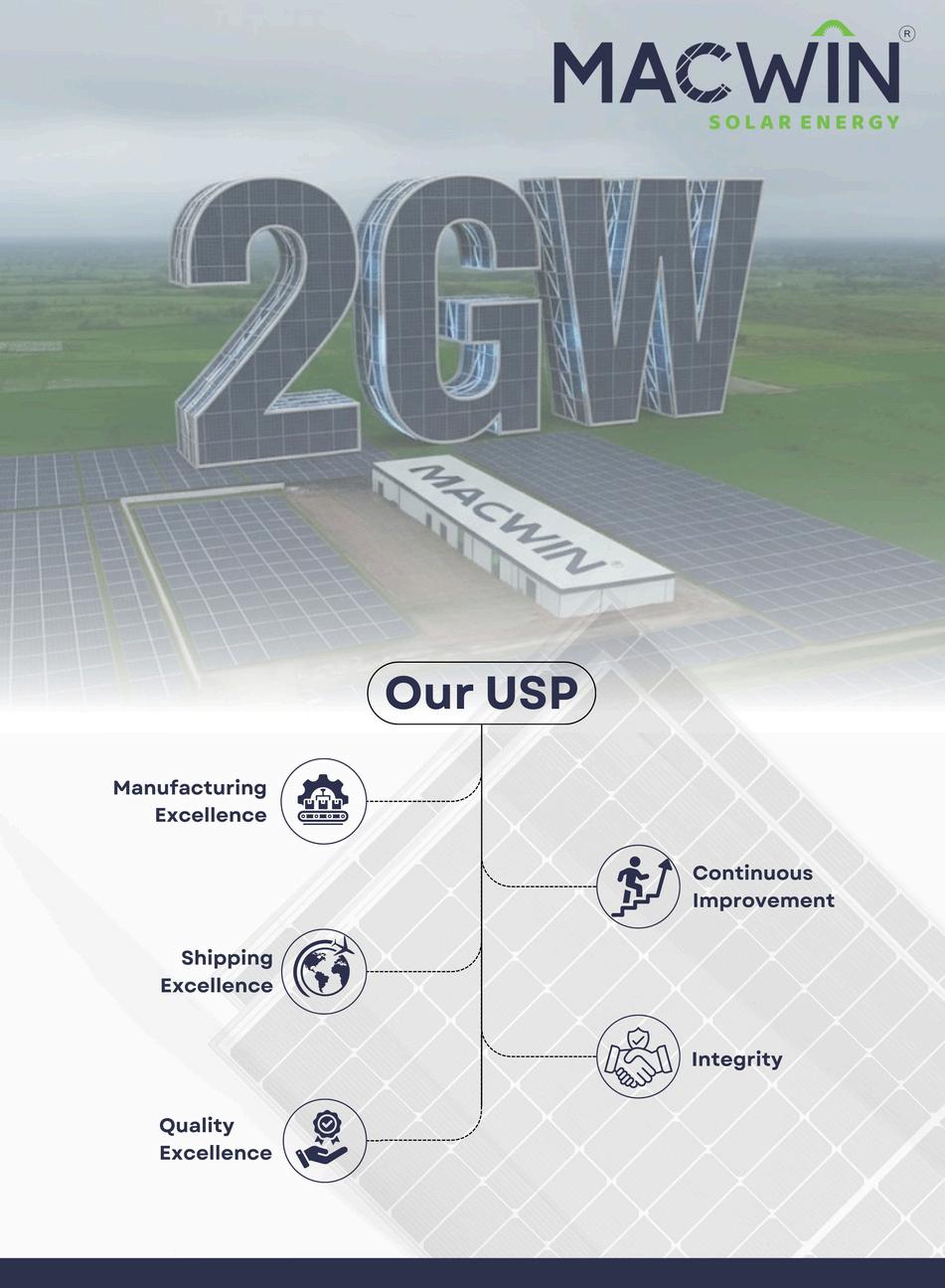
HARIRAJAN. R
CEO
IPL PRODUCTS
Precision, Performance, and Progress in Every Transformer
KEY HIGHLIGHTS:
I.P.L. PRODUCTS has grown into a key renewable player, delivering 3.5 GW of solar and wind projects since 2020.
Its advanced design and testing ensure reliable, high-performance transformers for demanding conditions.
Strong partnerships and R&D drive its vision to become a complete renewable solutions provider by 2030.
We are not just transforming transformers; we are transforming our role into a trusted architectofIndia’srenewableenergyfuture.
QI.P.L. PRODUCTS has ventured into renewable energy; can you share the journey and your strategic vision for this sector?
Since its humble beginnings, I P L PRODUCTS has grown steadily through decades of innovation and dedication What started in 1974 with the manufacturing of Cast Iron Jointing Kits soon evolved into a trusted name in the electrical industry In 1982, we developed open-type pillar boxes, followed by the production of 11 kV isolators (A B switches) in 1986 In the Year 1996, we ventured into transformer manufacturing, Starting with distribution transformers and later, in 2006, expanding into power transformers, and In 2014 Collaborated with Jean Muller, Germany for Energy Efficient HRC Pillar boxes Today, we are proud to be among the few manufacturers in Tamil Nadu capable of producing transformers up to 50 MVA, 110 kV class and Isolators up to 400 kV
Our next leap came in 2020, when we stepped into the renewable energy sector, focusing on solar and wind transformers. Since then, we have successfully supplied transformers with a combined capacity of over 3 5 GW for solar projects, strengthening our role in India’s clean energy ecosystem


Our strategic vision is simple yet ambitious to position I P L PRODUCTS as a one-stop renewable energy solutions provider Beyond transformers, we are developing hybrid and energy storage interfaces designed to deliver superior efficiency, reliability, and long-term value Aligned with India’s “Net Zero by 2070” commitment, we aim to support the nation’s mission to expand non-fossil energy capacity and promote Make-in-India manufacturing.
India’s renewable energy journey is inspiring As of mid-2025, non-fossil sources make up around 50% of India’s total installed capacity (484.82 GW) a milestone achieved five years ahead of schedule The country now ranks 4th globally in renewable capacity, 3rd in solar, and 4th in wind At COP-26, India pledged to reach 500 GW of non-fossil energy by 2030, and we are proud to contribute to that mission.
At I P L PRODUCTS, quality and reliability are non-negotiable Every product we design goes through IS/IEC testing standards We use highgrade core steel, insulation, and advanced manufacturing processes to ensure consistent performance even in challenging site conditions Our focus on predictive maintenance and remote monitoring helps maximize uptime and reduce lifecycle costs critical for large-scale renewable installations
Collaboration is another key to our success We partner with top EPC players, renewable developers, and NABL-accredited laboratories, Government Testing Laboratories for validation and testing We also work closely with leading suppliers to source the latest magnetic and insulating materials suited for solar and wind transformer applications.
Looking ahead, we envision I P L PRODUCTS becoming a national and global name in renewable infrastructure Over the next decade, our focus is to expand our presence across India and international markets, with strong capabilities in Distribution, Power, Solar & BESS (Battery Energy Storage System) transformers.

At I P L PRODUCTS, reliability isn’t just a promise it’s the foundation of everything we build Every renewable energy transformer and component goes through a series of design validations, Type tests, and quality checks in line with IS/IEC standards to ensure the highest performance and safety
We use advanced design software to simulate real-world operating conditions, making sure our products perform efficiently even in the toughest environments from desert heat to coastal humidity Our manufacturing process involves vacuum drying, precision winding, and multi-stage oil filtration to achieve superior insulation strength and longer service life
Our manufacturing process is built on precision The core assembly and coil alignment are done using precision jigs to minimize losses and vibrations, extending operational life Each stage of production is monitored by a dedicated quality control team, ensuring zero deviations from design parameters.
The R&D and design team at I P L PRODUCTS continuously innovate to improve efficiency and reduce losses Every material we use is selected after detailed testing and verification. Our core laminations are made from premium-grade CRGO steel with high magnetic permeability, while conductors are drawn from certified electrolytic copper for superior conductivity
The insulating components including runners, spacers, and rings are sourced from PGCIL and NTPC-approved manufacturers, ensuring reliability under stress We also use TUPC (Class-E) conductor covering, capable of withstanding temperatures up to 120°C, offering additional protection against overheating vital for solar and wind transformers operating continuously in variable conditions
Our oven curing process guarantees moisturefree insulation, while our tank fabrication and testing procedures, conducted per IS 1180 and IS 2026, ensure structural integrity, leak- proof performance, and pressure resistance Every transformer undergoes routine, type, and special tests before dispatch including induced voltage, impulse, and temperature-rise tests to validate its performance under extreme conditions.
At the heart of all these processes is a simple belief quality is built, not inspected Every transformer that leaves our factory is a reflection of our engineering passion, our commitment to safety, and our promise of reliability to every partner who trusts I P L PRODUCTS
QCould you highlight key Partnerships Collaborations that enhance I.P.L. PRODUCTS renewable energy offerings?
At I P L PRODUCTS, we believe good partnerships make strong progress. Our growth in the renewable energy field is not just because of what we build, but also because of who we work with, Our strength lies in our retained clients, built on the foundation of quality and service.
We have a long-standing marketing & service partnership with ARROW MARKETING, who help us reach the right customers across India They understand our products and values, and that helps us connect better with industries, EPCs, and government projects
Our base strength lies in our vendors We treat them as partners of the company, ensuring prompt payments so that we receive our products on time and with the best quality; this ensures the same to our client
On the supply side, we proudly work with government bodies for distribution and power transformer supplies These partnerships have given us the chance to contribute to reliable power networks and public energy infrastructure
In renewable energy, our collaborations with EPC contractors and A-grade Electrical Consultants & Contractors have been key to our success Because of our continuous quality improvement and prompt service, lead us to convert our customers into clients
Together, we’ve delivered transformers for solar, wind, and BESS (Battery Energy Storage System) projects across the country. Each project teaches us something new and helps us improve our product design and service quality

LEADERSHIP VOICES

We also support our partners after installation by offering preventive maintenance tips, technical assistance, and fast response whenever needed For us, it’s not just about selling transformers; it’s about standing with our customers for the long run
These partnerships make I P L PRODUCTS stronger every day When our partners grow, we grow with them Our aim is to keep expanding our network both in India and globally and keep contributing to India’s renewable energy goals and the Net Zero 2070 vision
At the end of the day, we build trust, relationships, and a vision for a cleaner and brighter future
QWhere do you see I.P.L. PRODUCTS in the renewable energy sector in 5-10 years, and what are your long term goals?
In the next 5 to 10 years, I see I P L PRODUCTS growing into one of India’s most trusted partners in renewable energy not just for transformers, but as a complete energy solutions company.
The central government has already laid out aspiring goals that guide our path For example, India has committed to reaching 500 GW of nonfossil capacity by 2030 Also, India has crossed the milestone where non-fossil sources account for about 50 % of total installed electricity capacity ahead of schedule
Prime Minister Modi said that India’s future lies in clean energy, clean growth, and a sustainable lifestyle These signals guide how we build our
roadmap So in 5 to 10 years, we aim to align our R&D, manufacturing, and product portfolio directly with those national targets
Here’s how we plan to do it:
We’ll expand our renewables-focused R&D designing more efficient, lighter, smart transformers for solar, wind, and BESS applications
We’ll strengthen our test labs and prototyping facilities so we can quickly validate and certify new innovations that meet government or international specifications
We aim to increase export presence to markets in Africa, Southeast Asia, and the Middle East, where renewable adoption is accelerating.
We’re continuously investing in R&D improving our product designs to make them more compact, efficient, and environmentfriendly. Our engineers are working on IoT-based monitoring, allowing customers to track transformer health in real time and predict maintenance before issues arise
Over the coming years, we plan to scale our capacity and set up a dedicated green manufacturing unit focused on renewable and hybrid systems
In parallel, we will keep strengthening our manufacturing base in India more automation, higher quality, lower cost to support “Make in India” and become globally competitive
VISHAL NATANI
Founder&CEO
LogicsPowerAMR
Transforming the Future of Solar Plant Management LEADERSHIP VOICES
KEY HIGHLIGHTS:
Logics PowerAMR unifies all solar plant data under one intelligent platform for seamless, centralized management
It goes beyond SCADA with multi-layer integration, one-minute precision, and 99 99% uptime for complete digital control
Deployments cut downtime by 40% and improved PR consistency through real-time, reliable data access
export control for seamless Solar–operation ensuring uninterrupte and optimization of solar power


RMS (Remote Monitoring System): real-time monitoring of solar, hybrid, and DG systems- delivering instant visibility and control across distributed assets
WMS (Weather Monitoring System): Accurate environmental parameter tracking for performance analytics.
CMS (Centralized Management Platform): Unified data acquisition across all solar assets, providing accurate, actionable insights into plant performance and reliability
teg at o o a y t d pa ty o e te st c logger to connect directly into our Centralized Management Platform
Over 5000+ sites are already live offering clients complete flexibility and freedom from hardware lock-in
Custom Theme Dashboards
Smartly engineered, fully customizable dashboards for DG Sync, SCADA, Zero Export, WMS, PM-KUSUM, Battery, and Hybrid systems
What inspired the transformation journey in solar plant management?
The transformation began with a simple observation: solar plants were generating power, but not generating clarity
We saw data scattered across devices, formats, and portals limiting how much operators could actually optimize.
Our goal was to enable centralized management by bringing every component under one digital roof from SCADA and PPC to WMS, PM-KUSUM, DG sync, ZED, Hybrid, Battery systems making solar plant operations truly intelligent, accessible, and reliable
That’s what inspired the creation of Logics PowerAMR a platform built to empower the future of solar automation
Q QCan you tell us more about your Product and Solution Ecosystem?
OurOngoingFlagshipProductsinclude:
SCADA- Customized Hardware Software
SCADA solution integrates all solar assets, DI/AI signals, and field devices enabling comprehensive local and remote monitoring, control, and automation for precise plant performance and grid compliance
DG Sync, Hybrid Control & Zero Export Device(ZED): Automatic synchronization and

Smart Data Loggers: Multi-protocol compatible devices for seamless integration of inverters, meters, and controllers bridging communication across diverse hardware
Advanced Wireless Systems: Our wireless communication devices enable high-speed, interference-free data exchange between DGs, inverters, and control panels even across large or multi-building installations.
QWhat new technologies, products or innovations has your company developed or launched in 2025 ?
At Logics PowerAMR, we continue to expand our product line integrating intelligence, reliability, and flexibility across every layer of solar and energy automation.
Our new product launches for 2025 focus on smarter, more connected, and future-ready solutions designed to simplify operations, enhance efficiency, and empower our clients:
SCADA & RMS for PM-KUSUM Component A & C
As part of the Government of India’s PMKUSUM initiative, we’ve launched integrated SCADA and RMS systems capable of seamless data transmission to SEDM and MNRE portals Already deployed across 500+ MW of live projects, ensuring compliance, transparency, and effortless remote access
Delivering intuitive visualization, brandaligned design, and effortless control tailored to every client’s need.
SCADA & PPC for Utility-Scale Solar Plants
Our advanced SCADA system now supports local monitoring, control, and reactive power management, fully integrated with SLDC data transmission (IEC 104) protocol Successfully implemented across MW-scale plants, enabling grid compliance and highperformance communication
Hybrid inverter and Battery EMS
Delivered to leading OEMs, this intelligent Energy Management System provides a unified platform to monitor and control hybrid inverters and battery systems, ensuring precise grid synchronization and optimized power flow between solar, grid, and storage for maximum efficiency and reliability.
QHow is your platform different from conventional SCADA or monitoring systems?
Unlike traditional systems that are often sitespecific or vendor-locked, our platform offers:
Consistent one-minute data frequency without any missing points and instant fiveyear retrieval ensuring accuracy and longterm reliability
Multi-layered management integrating SCADA, HMI, PM-KUSUM, DG Sync- ZED, WMS, and even BESS all in one place
Custom theme dashboards, and Integration with third-party systems making it highly flexible and compatible
We use redundant communication layers and cloud synchronization to ensure zero data loss and 99 99% uptime
White labeling options, allowing partners or EPCs to use their own branding
Scalability from kW to MW level, covering everything from rooftop plants to large-scale utility projects.
Comprehensive analytics and performance intelligence highlights underperforming plants, inverters, or strings, enabling faster diagnosis and action
API-level interoperability to connect any third-party data logger or device effortlessly to our centralized management system
Exhaustive and comprehensive mobile app enabling full functionality at your fingertips, enabling plant monitoring, analytics, and control on the go
Whether it’s a small rooftop or a 100MW utilityscale site, our system adapts seamlessly ensuring data consistency and complete scalability.
In short, we go beyond monitoring we enable complete digital management, advanced analytics and performance intelligence for solar assets
QCan you share a success story or measurable impact from your recent deployments?
One of our portfolio-wide deployments connected dozens of solar plants across states under a single centralized platform
Within weeks, we saw downtime drop by nearly 40% and PR consistency improve by 2–3%
Operators could access real-time and 5-year-old data instantly, detect deviations at a 1-minute frequency, and act immediately
The client appreciated how the system maintained continuous data without a single missing record with uptime exceeding 99 99%, even under variable network conditions
How do you ensure accuracy, data integrity, and system uptime across large portfolios?
We use redundant communication layers and cloud synchronization to ensure zero data loss
All data is validated directly from inverters and sensors through secured IoT gateways
We maintain 99.99% uptime, 1-minute resolution, and instant data recall across five years
Our servers, APIs, and devices are continuously monitored, ensuring every point of data is reliable, traceable, and ready for audit
QWhat message would you give to solar developers and investors about digital transformation?
I would say that digital transformation is no longer optional it’s the foundation of sustainable, scalable, and profitable solar operations
Investing in an intelligent platform ensures you have transparent performance metrics, realtime command, and long-term reliability
Automation, white labeling, and centralized management are not just features they are strategic tools that protect your revenue and reputation
At Logics PowerAMR, we see digital transformation as a partnership with our clients it’s about giving them control, confidence, and clarity in every decision, while enabling smarter, greener, and more profitable solar assets.
QLEADERSHIP VOICES
How do you envision the “future solar plant” of 2030?
I think the solar plant of 2030 will be a fully connected, intelligent ecosystem, where every asset from solar modules and batteries to hybrid systems communicates seamlessly and makes decisions autonomously
I imagine real-time analytics, predictive maintenance, and AI-driven optimization will become standard
Beyond technology, the real transformation will be in how customers experience it They won’t need to worry about monitoring or efficiency because the system itself will handle it, giving them peace of mind, reliability, and maximum return.
In that future, I see Logics PowerAMR’s role deeply embedded in the customer journey not just as a provider, but as a trusted partner ensuring every solar asset performs optimally, every day.
Ultimately, the most valuable innovation isn’t just smarter solar technology it’s a simpler, more empowering experience for the people who rely on it
And we at Logics PowerAMR are building that future today.



MARKET STATISTICS
Solar Installations by State
TOTAL SOLAR PV INSTALLATIONS AS OF SEPTEMBER, 2025 (MW)
SOURCE:MNRE
In the pie chart, Renewable capacity additions continue to increase at a rapid pace in India, accounting for approximately 38.85% of India’s total power capacity at the end of August 2025. India’s total installed power capacity stood at over 495 5 GW at the end of August 2025 from all the sources, with renewables accounting for 192 5 GW, making up 38 85%, compared to cumulative renewable energy installations of 152 6 GW at the end of August 2024, which represented a growth of over 26% year-over-year. Solar power accounted for approximately 123 GW of installations, which represents 24 8% of the total installed power capacity Among the renewable, Wind and Solar constitute over 91% of the total renewable (excluding large hydro), Wind Power installed capacity at the end of August 2025 was over 52 6 GW, which represents 10 63% of the total power capacity installed.
Monthly RE Generaton in India
SOLARQUARTERRESEARCH
INDIA POWER MIX
India achieved a remarkable milestone by installing an unprecedented 29,467 57 MW of Solar PV capacity in the calendar year 2025 till September By the end of Q3 2025, the country's total Solar PV installations surpassed 127 GW During this period, rooftop Solar PV installations reached approximately 21.52 GW. Rajasthan led the way, with 34,555 87 MW installed, accounting for 27 14% of the nation’s total Solar PV capacity The county also added around 29 GW in the first three quarter of the calendar year 2025. Rajasthan, Gujarat, Maharashtra, Tamil Nadu, and Karnataka together contributed over 75 06% of the total installed Solar PV capacities across the country While Rajasthan and Gujarat maintained their leading positions, Maharashtra stepped up two spots to its position, pushing Tamil Nadu and Karnataka down to fourth and fifth place compared to installed solar PV capacity by September 2024 The overall Solar PV installations saw a growth of over 40 29% compared to the 90 762 GW recorded by the end of September 2024
SOURCE:CEAAUG2025|SOLARQUARTERRESEARCH
Total renewable energy generation in September 2025 reached 27,859 13 million units, which is an increase of RE generation by around 22 70% year-over-year from September 2024, when the RE generations were 22,396 06 million units Solar Power generation has also increased by around 11 79% year-over-year from September 2024 (11,302.62 million units) to September 2025 (12,634 94 million units) Wind Power generation has increased by almost 45 35% in the same period and reached 12,893.73 million units in September 2025
SOURCE:CEA

Rajasthan Madhya Pradesh Tamil Nadu Gujarat Telangana Andhra Pradesh Uttar Pradesh Haryana
Karnataka
Maharashtra

MARKET STATISTICS
Solar Vs Wind Generation In India In 2024-25
Renewable Energy Vs Solar Generation
Hybrid Projects (Solar Component)
SOURCE:MNRE(SEPTEMBER2025)
As of September 2025, India’s installed hybrid projects capacity reached 3,256 78 MW, contributing around 2 56% to the country’s total solar PV capacity This is part of the overall renewable energy capacity of 197 2 GW, excluding large hydro Hybrid projects, which combine solar and wind power, are currently limited to just three states: Rajasthan, Gujarat, and Karnataka. Among these, Rajasthan leads with the highest installed capacity of 1,980 MW This is mainly because the state has strong potential for both solar and wind energy Rajasthan receives high solar irradiation and also experiences strong wind speeds, making it ideal for hybrid energy generation The installed capacity of hybrid projects has shown a year-on-year growth of about 23.72% compared to September 2024, when it stood at 2,632.32 MW. This steady growth highlights the increasing focus on hybrid projects as a solution to improve grid stability and renewable energy utilization


MARKET STATISTICS
Electricity Market
In September 2025, the Indian Energy Exchange (IEX) reached a total volume of 11,370 million units (MU), a 2 7% year-over-year decline
According to government data published in September 2025, the country's energy consumption reached 145 91 BUs, representing 3 2% increase year-on-year The Market Clearing Price in the Day Ahead Market at ₹3 58/unit during September 2025, declined 14 5% year-on-year Similarly, the Market clearing price in the Real Time Market at ₹3 31/unit during September 2025, declined 16 8% year-on-year
Lowest Solar Tariff (₹/kWh) in 2024 - 2025
lowestTariff(INR/Kwh)
NVNN500 MW/1000 MWhWith VGF SECI2GW With4 GWhBESS PhaseXVII RUVNL 500 MW/1,000 MWh Standalon eBESS
NTPC12 GWISTS Wind-Solar Hybrid Power (Hybrid2)
MW/1200 MWhBESS REWA (NEEMUCH SolarPark) 170MW
SJVN 1200MW ISTSFDRE 3 GUVNL250 MWSolarPV ProjectsWith Greenshoe Opetion PhaseXXVl
MWH With BESS NTPC 1200Wind solar Hybrid03
SJVN1200 MWWith 600 MW/2400 MWh NVVN250 MW/1000 MWh BESS NHPC 1200MW ISTSSolar With600 MW/2400 MWh BESS
MW/500 MWh WithBESS
The introduction of the Approved List of Models and Manufacturers (ALMM) List-I for solar PV modules, along with the upcoming ALMM List-II for PV cells effective from June 2026, has created fresh compliance challenges for developers participating in India’s solar auctions These regulatory measures, combined with persistent global supply chain disruptions triggered by geopolitical tensions such as the Russia-Ukraine war, the U S trade tariff conflicts, and volatile currency exchange rates, have led to noticeable fluctuations in solar tariffs
While the Indian government has provided some relief by extending project commissioning timelines, developers continue to face mounting cost pressures The recent imposition of anti-dumping duties on solar PV glass imports from China and Vietnam has further increased input costs, prompting domestic manufacturers to raise prices and adding financial strain to project economics To mitigate these impacts, the government has announced GST relief on solar PV modules and components effective from September 2025. India crossed 100 GW of Solar PV Module manufacturing installed capacity.
Meanwhile, the U S tariff hikes on solar imports have tightened global module supply, pushing prices higher and indirectly influencing the Indian market As a result, solar tariffs in India through 2024 have remained volatile, shaped by escalating material costs, project size, and grid connectivity constraints








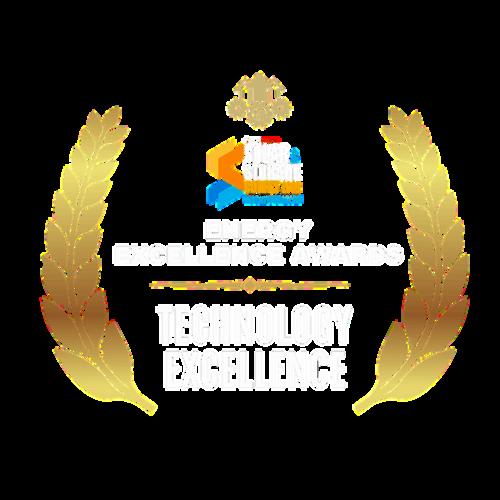



Emerging Solar Module Company of the year
Usha Shriram Solar
Innovative Technology Leadership Award: PV Modules
Novasys Greenergy Limited

State Technology Leadership Award - Modules
Gautam Solar Private Limited

Indigenious Technology for Solar Inverter
Selec Controls

Atmanirbhar Solar Module Manufacturing Leader of the Year
Bluebird Solar Pvt. Ltd.

Company of the Year: PV Module Manufacturing
Pahal Solar Pvt Ltd

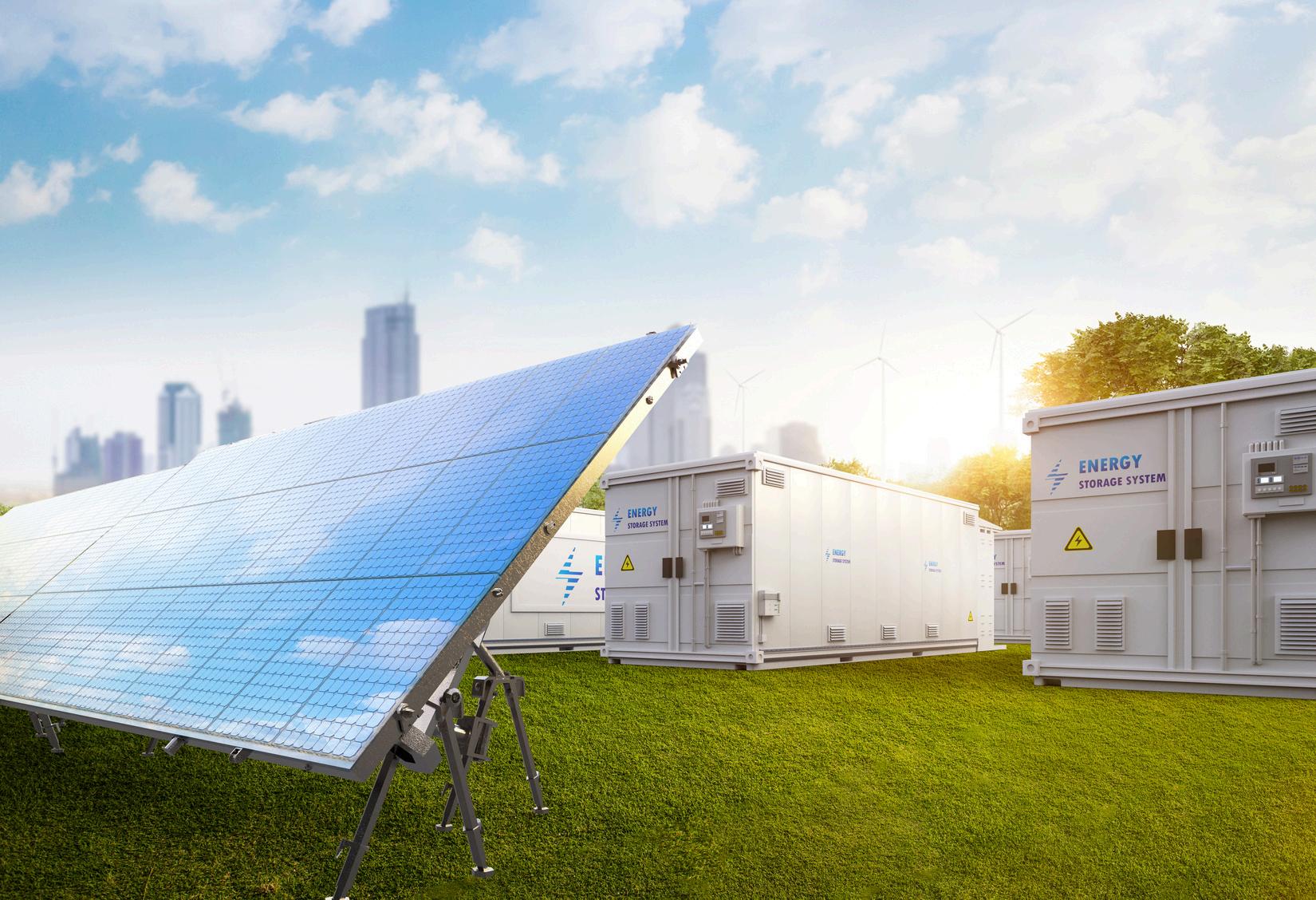

Excellence in PV Module Manufacturing
Saatvik Green Energy Limited

Excellence in Advanced Solar Module Technology
Loom Solar



Company of the Year: Solar EPC Services (Residential)
Solar Saathi
Company of the YearExcellence in Project Delivery

State Distributor of the Year
TRADE PLUS RESOURCES AND SOLUTIONS PVT.LTD.

Excellence in Client Service & Support
SHRI DHAR RENEWABLE
ENERGY PVT LTD


Innovative Solar Rooftop Project of the Year
Enerparc Energy Pvt Ltd


mpany of the Year: Rising ar in KUSUM Projects
s Solar Solutions OPC t Ltd

Company of the Year: Rising Star in Residential Projects
SHYAMA SOLAR




Emerging Distributor of the Year
TREE SOLUTION AND SERVICES
Best Engineering Team of the Year
Indore Sunlight Private Limited




Solar EPC Company of the Year - Commercial
Agrawal Developers
Solar EPC Company of the Year - Residential
Blueneba Technologies Pvt Ltd
Solar EPC Company of the Year - Industrial
SUN ENTERPRISES

Woman Entrepreneur of the Year
Sharad Lathi
Director
TRADE PLUS RESOURCES AND SOLUTIONS PVT LTD
Strategic Thought Leadership in Renewable Energy
Sankalp Ved
Director
Ruchi Infra Structure Ltd

